Invasive Plants: 10 Beautiful But Invasive Perennials You Do Not Want In Your Garden
These invasive plants are all beautiful so you will be tempted to plant them in your garden. Find out which invasive species are not worth the hassle.
Since I’m in planning mode for adding a Japanese-inspired garden to my yard, I have been looking for plants that I will want to include in the space. (You can see some of my inspiration for that HERE).
And I was surprised to find that some types of Japanese maples (a requirement for a Japanese garden if you ask me) are on the Invasive Species list!
That got me thinking about all of the experiences I have had with invasive plants over the years. I know that I do not want to intentionally plant another one!
For one thing, invasive species add so much more work to the gardening process. If you read my post on low maintenance gardening, you know that even though I love my garden, I also don’t want to spend all of my free time working in it.
And the second problem is that most of these plants can easily escape your garden. When they set up shop in a natural habitat, they really cause a lot of damage to the native ecosystem.
So in the interest of sharing, keep reading to see my list of beautiful invasive plants you do not want in your garden.
Note: Whether or not these (or any other) plants will become invasive in your garden depends on the growing conditions in your area.
The plants on this list can all be found on invasive plants lists maintained by state and university extension programs. Which means they have the potential to become invasive.
But if you live in an area where the growing conditions are not favorable for the plants, they may not cause any problems…or may not grow at all 🙂
If you’re not sure how a plant will behave in your area, talk to your local nursery and other gardeners in your neighborhood to find out. Or check the Invasive Plant Atlas for North America, which provides maps of where different varieties of plants are considered to be invasive.
Purple Loosestrife (Lythrum salicaria)
Purple Loosestrife by GartenAkademie (Own work) [GFDL or CC BY 3.0], via Wikimedia Commons
Purple Loosestrife (Lythrum salicaria) is a very hardy perennial that spreads easily and can choke out a natural wetland (or field) very quickly.
The density of the shoots kills all other plants in its path, which is why it is on many invasive species lists across North America (and has even been banned in some places).
Cooper Marsh Purple Loosestrife By Saffron Blaze (Own work) [CC BY-SA 3.0], via Wikimedia Commons
This picture of the Cooper Marsh Conservation Area in Ontario, Canada shows just how invasive it can be.
Garden varieties of Loosestrife are still for sale in some places, and are sometimes included in wildflower seed packets.
Since these can cross-polinate with wild varieties to create seeds, make sure to double-check what you are buying.
If you want more information, there is an in depth article on the Minnesota Sea Grant website.
Japanese Honeysuckle (Lonicera japonica)
Forest & Kim Starr [CC BY 3.0], via Wikimedia Commons
I have never actually planted Japanese Honeysuckle, but I do have first hand experience with how invasive it is.
Some of it is growing wild in the ravine behind my house and it is impossible to keep under control. I actually think it is worse than the kudzu…and if you live in a location where kudzu grows, you know how invasive it is…
This Honeysuckle has white and yellow flowers that are really pretty, and it smells wonderful when it is blooming. But it is definitely not worth the trade off of trying to keep it from strangling all other living plants!
Once it escapes into the wild (as it inevitably seems to do), it is devastating to the environment.
Note: There are non-invasive varieties of Honeysuckle which will be just fine in your garden. It’s the Japanese version that can cause problems.
Autumn Clematis (Clematis terniflora)
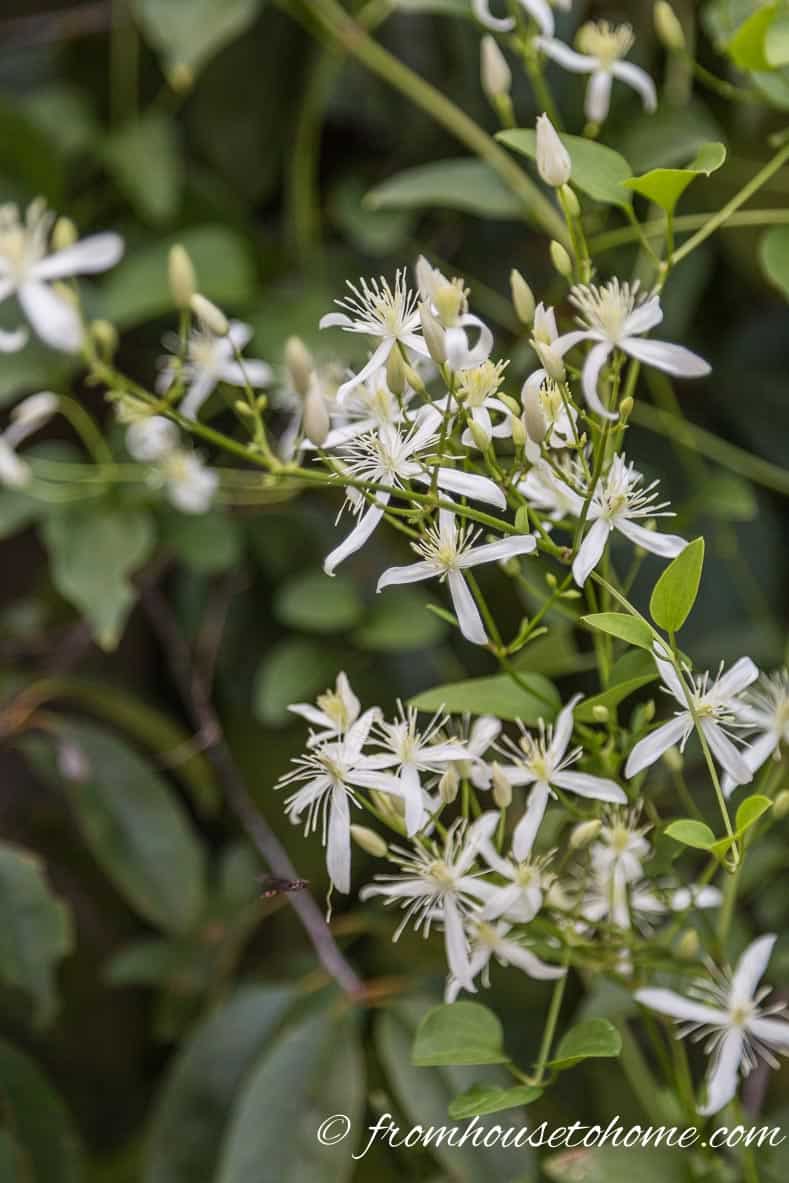
Autumn Clematis is not a plant that I ever would have guessed to be invasive. All of the other clematis varieties I have grown have always been very well behaved.
I planted this on my fence a couple of years ago, and actually it never did very much in my yard (I thought it had died). Then I was out pulling the kudzu and honeysuckle outside my fence, and saw this other vine that was growing everywhere. The blooms looked a lot like the autumn clematis I had planted, but I thought it couldn’t be the same plant.
Then I looked it up and found it on the Invasive Plant Atlas for South Carolina.
Of course, there are many non-invasive varieties of Clematis which absolutely deserve a spot in your garden, so don’t be afraid to plant those ones!
Wisteria (all varieties)
Wisteria By Dcrjsr (Own work) [CC BY 3.0], via Wikimedia Commons
I hate to add Wisteria to this list (it is really beautiful when it is blooming!)…but having lots of personal experience, I really can’t leave it off…
When I moved to South Carolina, a lot of people warned me that I shouldn’t plant Wisteria. I even had a co-worker tell me a story about over-turning a rented Bobcat trying to pull out Wisteria from the ravine at the back of his yard…but that still didn’t stop me from planting it.
I read that the Chinese (Wisteria sinensis) and Japanese versions (Wisteria floribunda) of Wisteria were invasive (you can find them on the Plant Conservation Alliance’s Least Wanted Vines list), but the American variety (Wisteria frutescens) was not on the list. So how bad could it be? (I have since found out that only non-native plant varieties are classified as “invasive”. So because this is a native variety, it isn’t on the list.)
Now that I have it growing in my garden, I can vouch for the fact that once it gets going, even the native variety grows like crazy.
It starts out as a little plant, and it takes a little while to get going…but once it does, look out! You have to be really vigilant about pruning to keep it where you want it. The picture above was taken in the spring after I had completely cut the wisteria down to the ground in the fall. By the time it started blooming, it had completely covered the fence.
Then if you ever want to remove it, good luck 🙂 I tried to dig up a plant at the back of my yard 7 or 8 years ago, and I am still pulling rogue Wisteria plants out of the garden in that spot. The lesson learned is…if you love the look of Wisteria as much as I do, you need to be prepared to do some work to keep it contained!
Maybe I should just stick to the painted kind…like I did in my office a while back (you can see the instructions for that project here).
Lily of the Valley (Convallaria majalis)
Lily of the Valley By H. Zell (Own work) [GFDL or CC BY-SA 3.0], via Wikimedia Commons
Lily of the Valley is a pretty woodland plant that blooms in the spring and has a wonderful perfume.
They are very easy to grow and will spread like wild fire…which is the first reason you don’t want them in your garden.
But the second (and maybe more important) reason is that these plants are extremely poisonous. Any pets or children (or even adults) that eat part of the plant will require medical treatment for poison.
Periwinkle (Vinca minor)
By Forest Wander from Cross Lanes, USA (Forget me not flowers) [CC BY-SA 2.0], via Wikimedia Commons
Periwinkle is an easy to grow evergreen ground cover that does well in the shade and is covered with really pretty blue flowers in the spring.
Sounds great, doesn’t it?
However, it also will overrun every other plant in your garden if you let it.
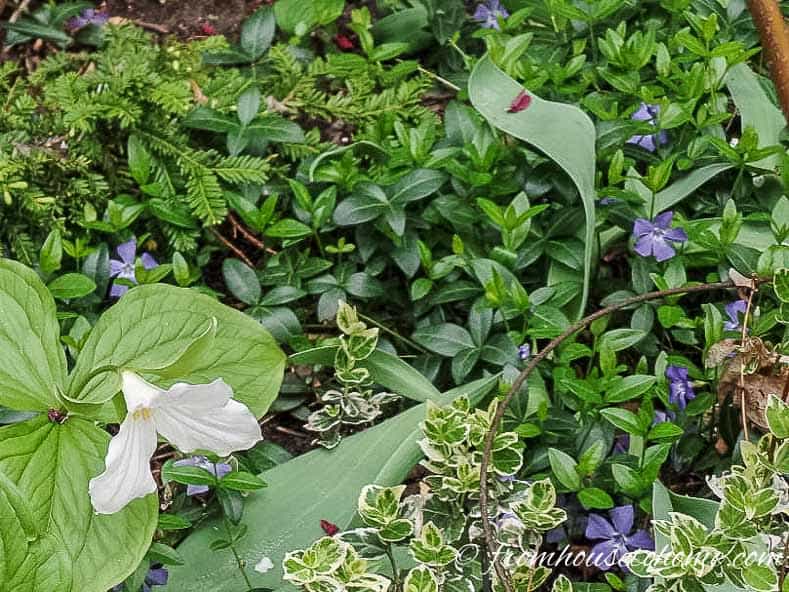
It starts out well mannered and seems like the perfect plant to add some interest underneath other plants in your garden.
But after if has become established (which takes a few years), it will start to grow up the stems of other plants and choke out any smaller plants in its way…except for the weeds which still seem to survive. You can see it in the background of this picture…it is beginning to get to the “takeover” stage.
This is another plant that I have spent many years trying to eradicate from my garden…without success so far…
Non-Clumping Bamboo (Phyllostachys aurea)

Ever since I saw this bamboo forest on Maui, I have loved the look (and sound) of bamboo.
It adds such a relaxing feel to the garden.
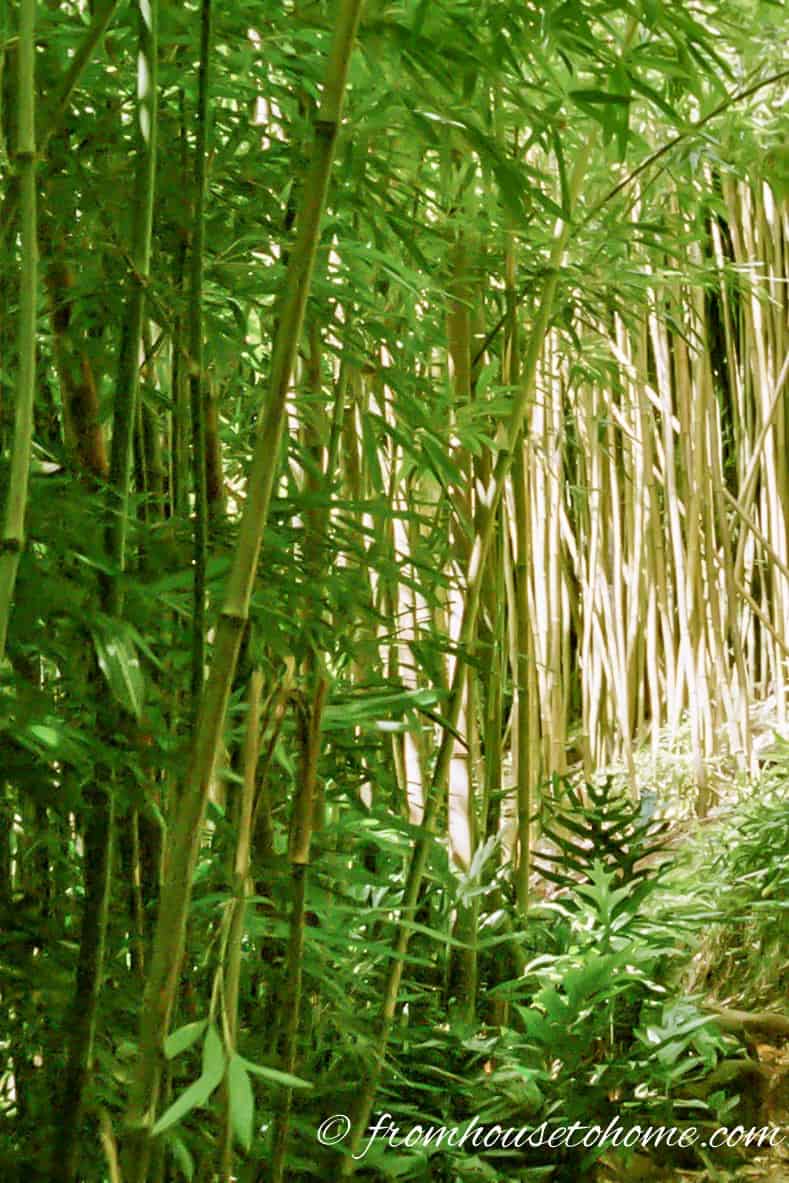
And then I saw the bamboo that had been planted along the railway tracks in South Carolina to act as a sound barrier…and has now taken over whole backyards. It is incredibly difficult to remove or contain once it has become established.
Since bamboo is part of the grass family, it is literally like grass on steroids. If you’ve ever tried to keep a running variety of grass (like Bermuda) out of your garden, you know how hard it is. Then think of trying to do that if the grass were the size of a bamboo plant!
There are some clumping bamboo varieties that are not as invasive, so make sure you plant one of these if you want bamboo in your garden.
Pampas Grass (Cortaderia selloana)

Pampas Grass is another large perennial grass that looks beautiful and is very easy to grow.
It also grows very quickly into a large clump and will self seed freely.
And that’s where the problem starts. It can easily crowd out all other plants if you are not vigilant about keeping it in check. Then if you try to dig it up, it has a massive root system that is very difficult to remove.
English Ivy (Hedera helix)
English Ivy by MurielBendel (Own work) [CC BY-SA 4.0], via Wikimedia Commons
Like a lot of people, I used to love using English Ivy in my hanging baskets. It always looks so nice trailing over the edge of the pot.
But if even one little piece of it touches the ground, you will have more ivy than you know what to do with.
That’s also what makes it so hard to get rid of…you have to remove every little bit of it from the ground or it will grow back.
Carpet Bugleweed (Ajuga reptans)
As the name suggests, Carpet Bugleweed (Ajuga reptans) is another ground cover that on the surface seems like a great addition to your garden.
Low growing, evergreen with purple-green leaves, and beautiful blue-purple flowers. And then it starts to spread and it’s impossible to pull out…the roots are in there, and like the ivy, any little piece left in the ground will grow.
In fact, in my yard, it not only takes over the garden but will totally cover the sidewalk, too if I let it.
If you are looking for a more comprehensive list of invasive plants, try the Invasive Plant Atlas for North America. The site was developed by The University of Georgia – Center for Invasive Species and Ecosystem Health and the National Park Service, and is maintained by several university, state and federal extension programs.
invasive.org is another organization that maintains a database of all kinds of invasive organisms (not just plants) for North America.
Both sites provide maps with each plant listing that let you know where the plant is considered to be invasive.
Other Plants You Might Like Better
Do you have experience with any other types of invasive plants? Tell us in the section below.
Pin It So You Don't Forget It!

This post was originally published on January 13, 2017 but was updated with new content on September 15, 2022.

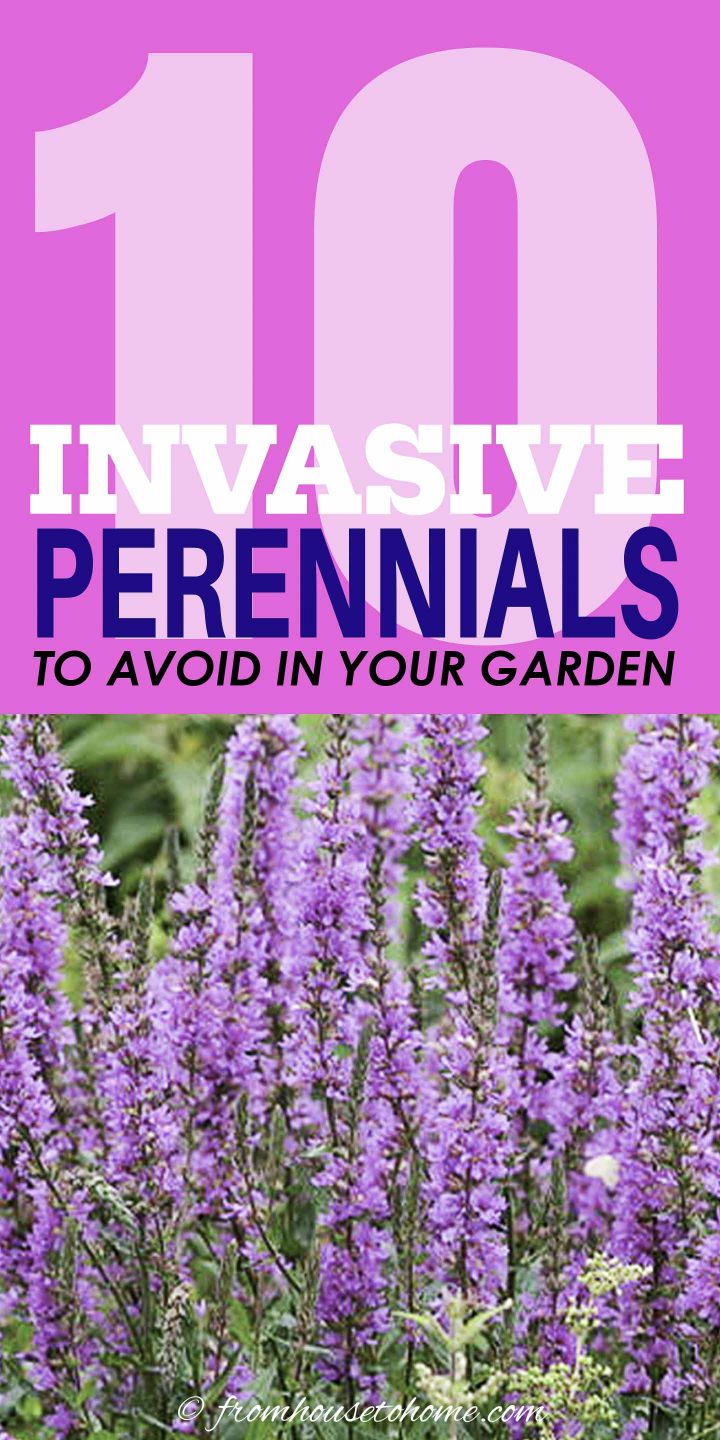

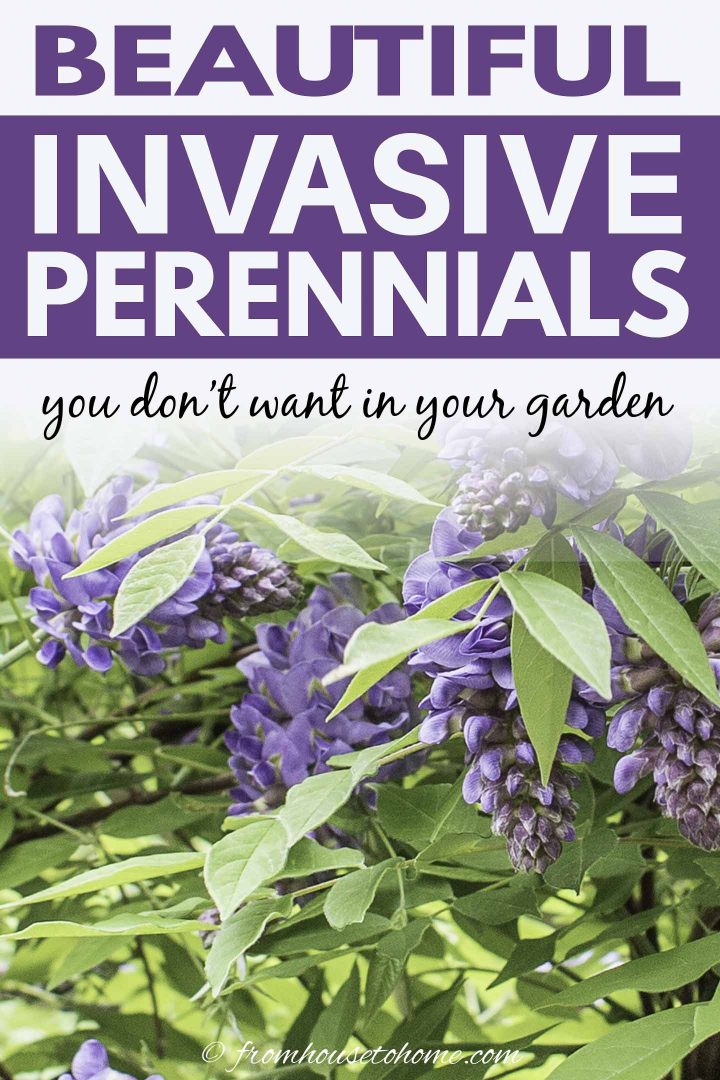
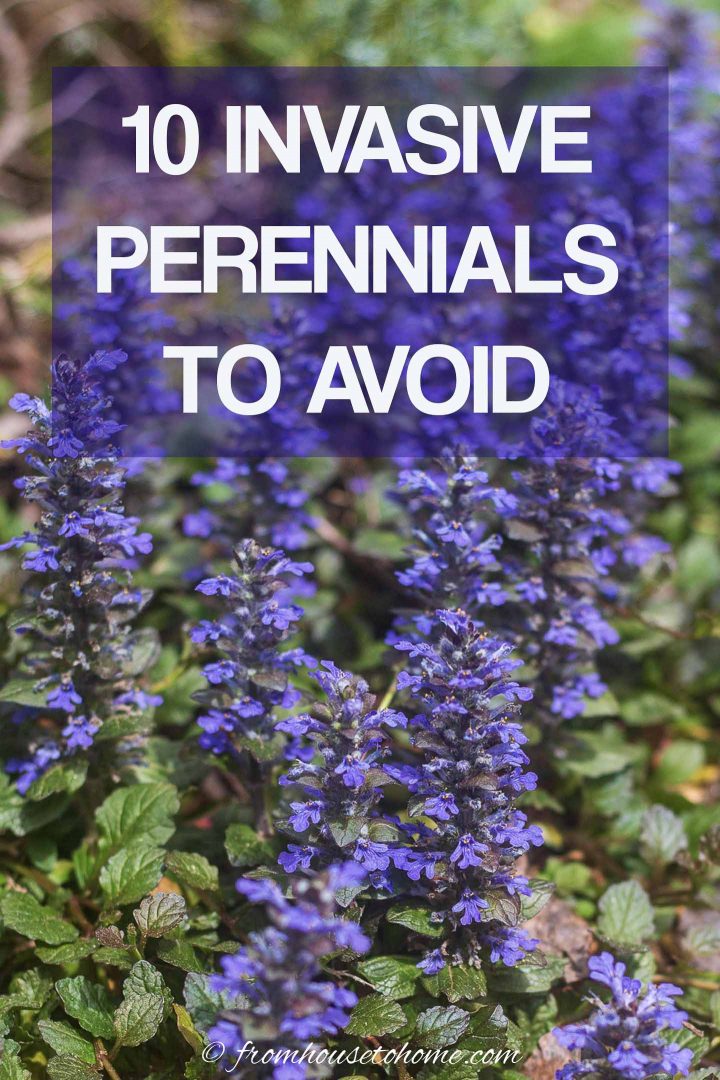

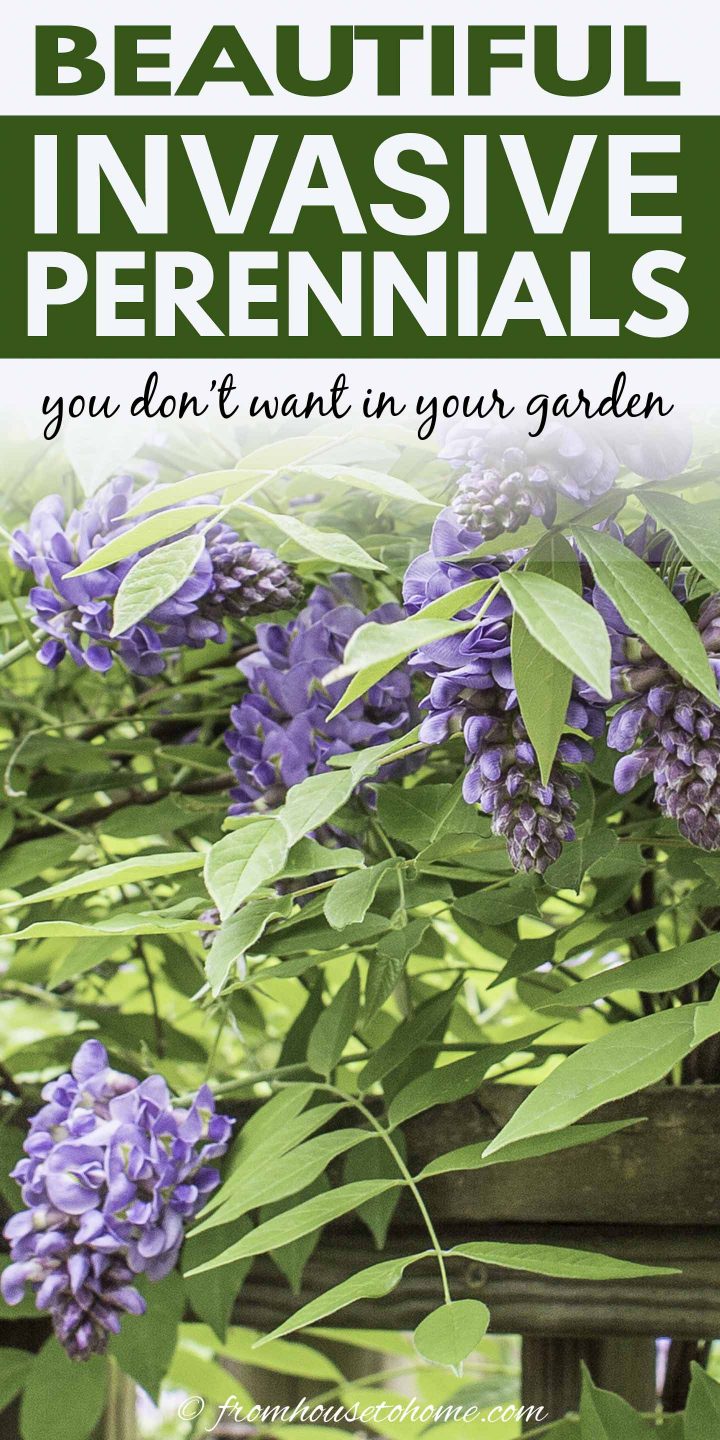
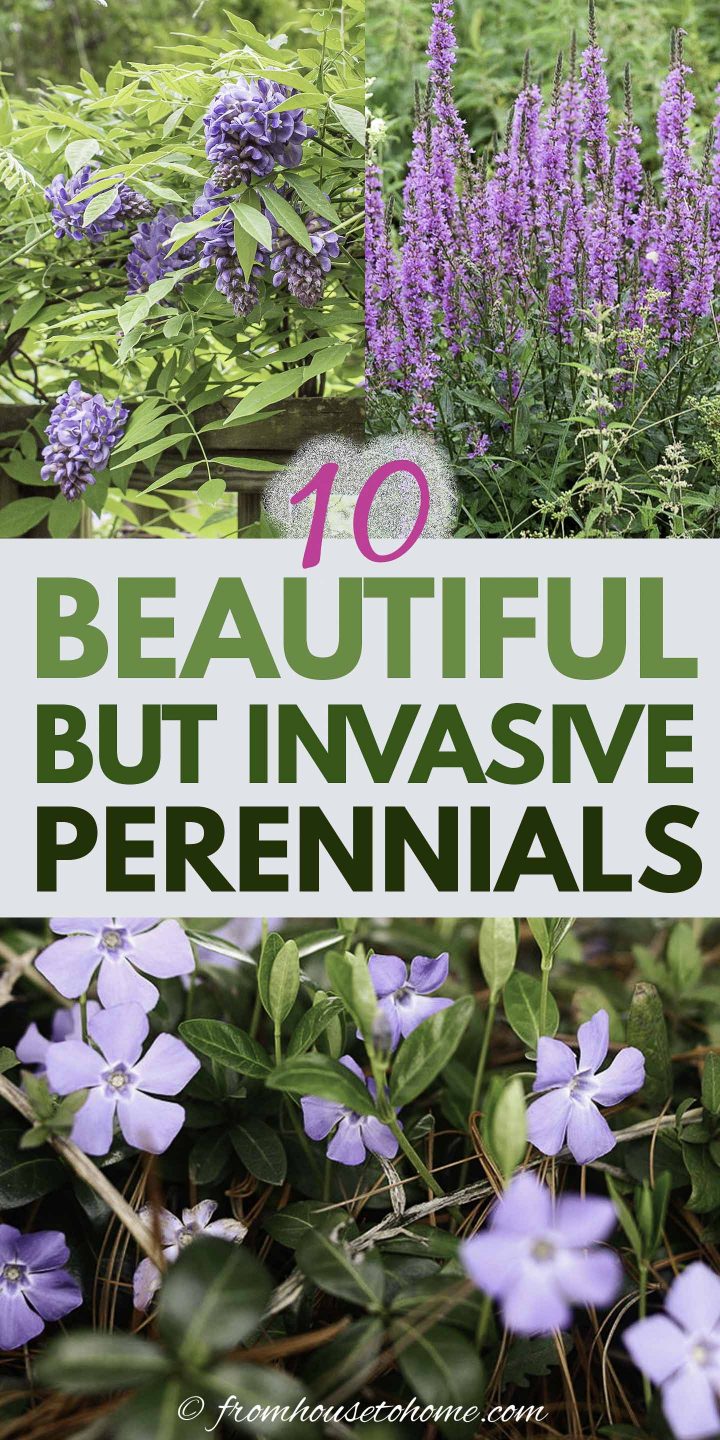
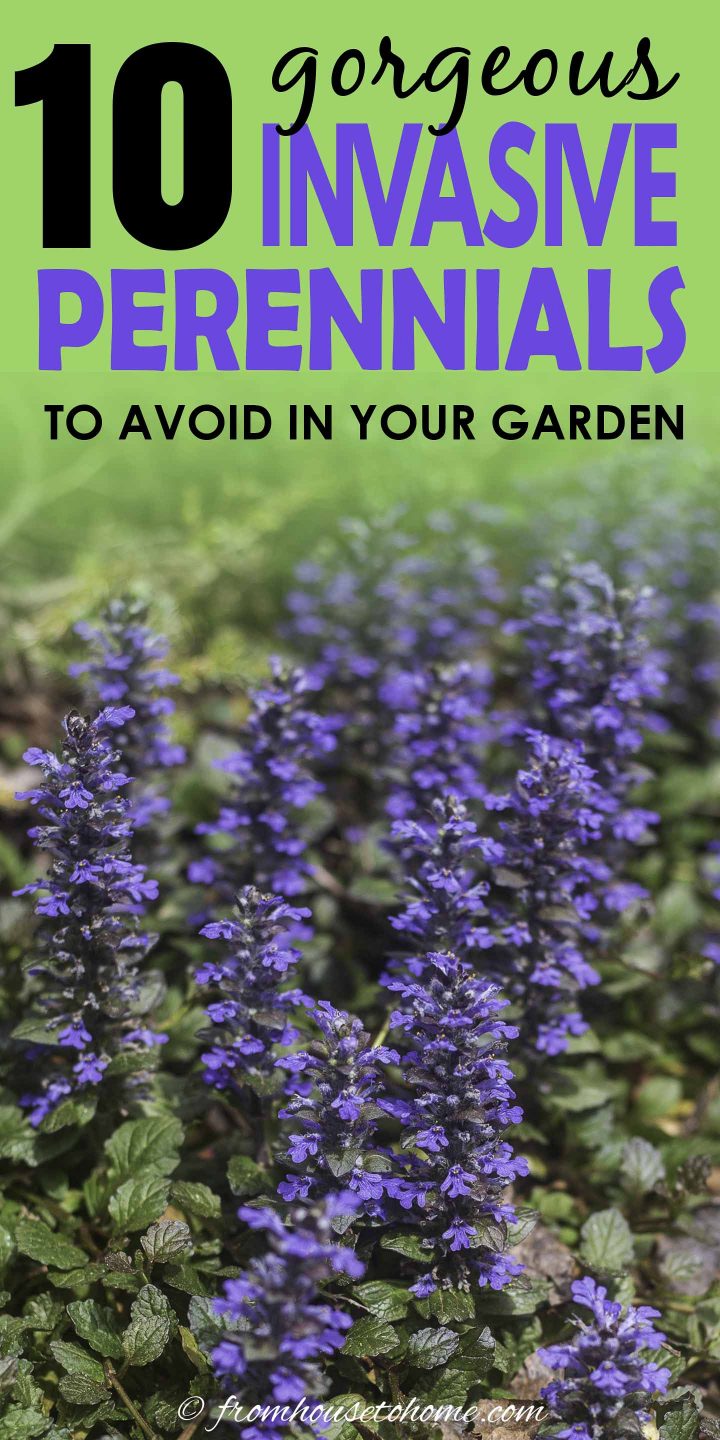
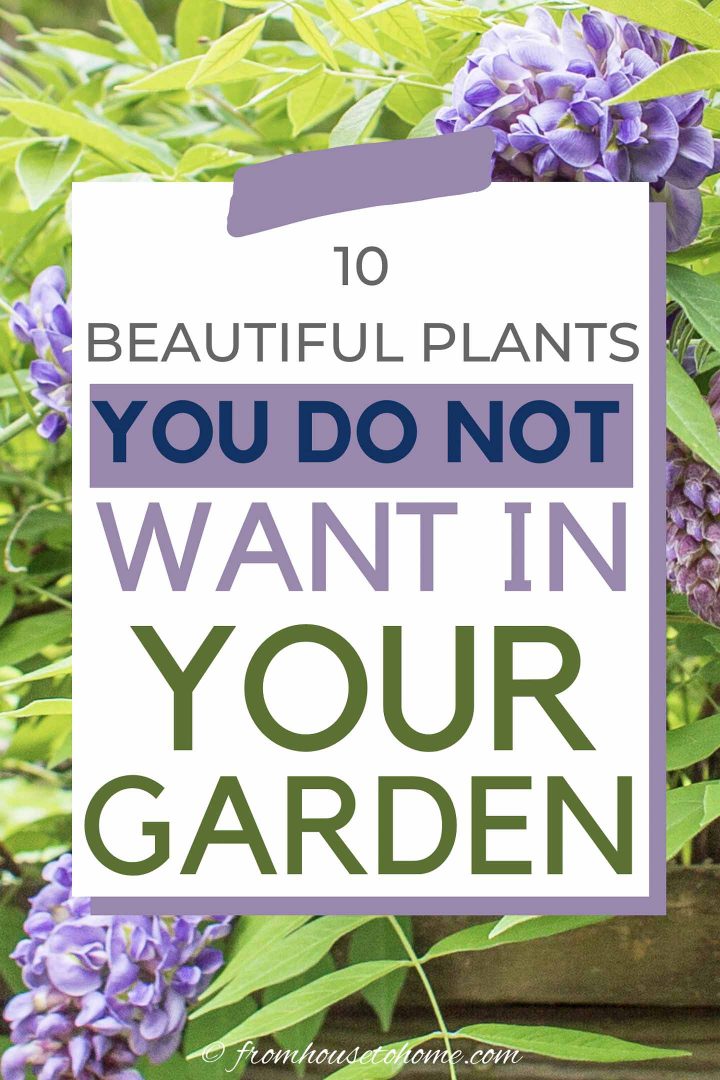
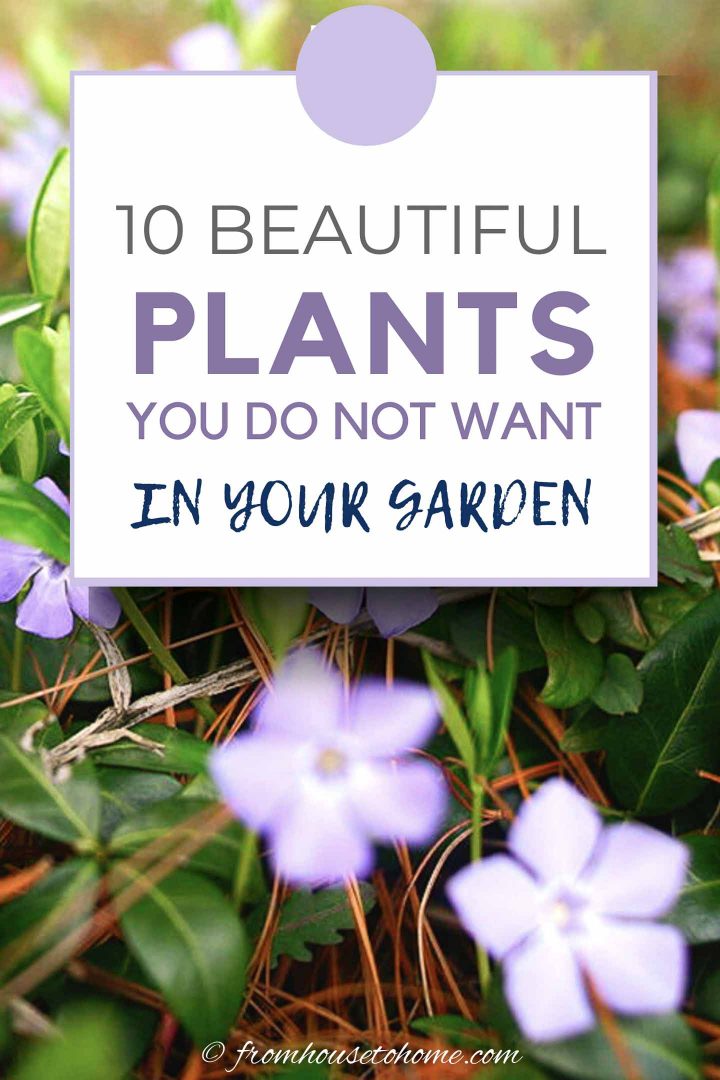


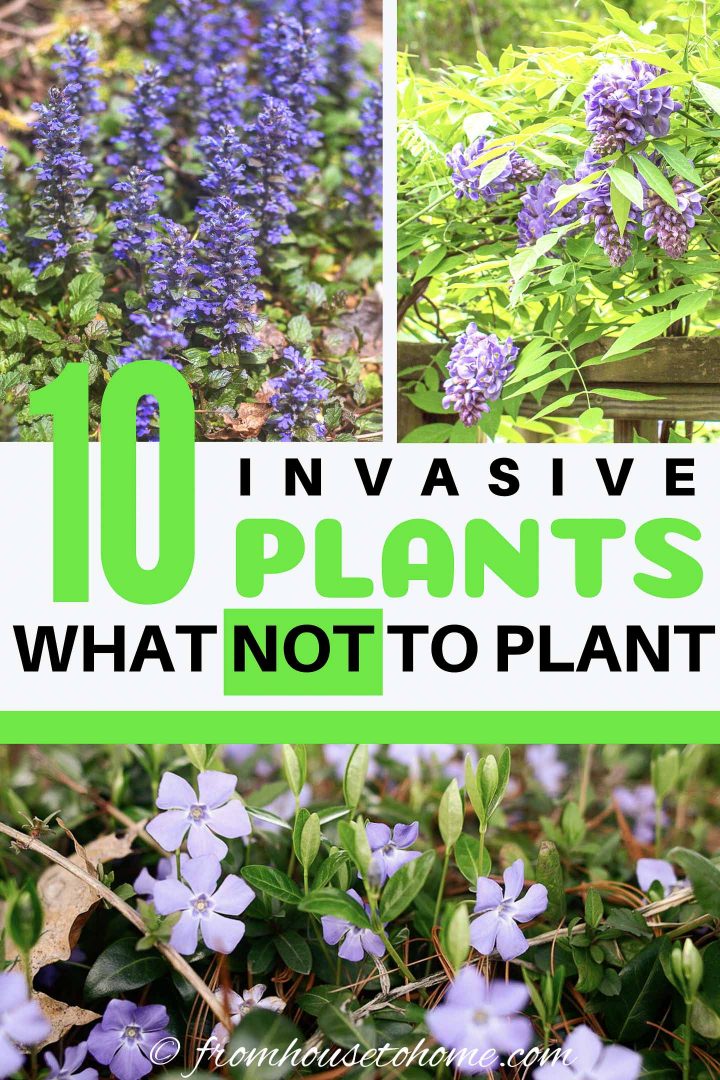
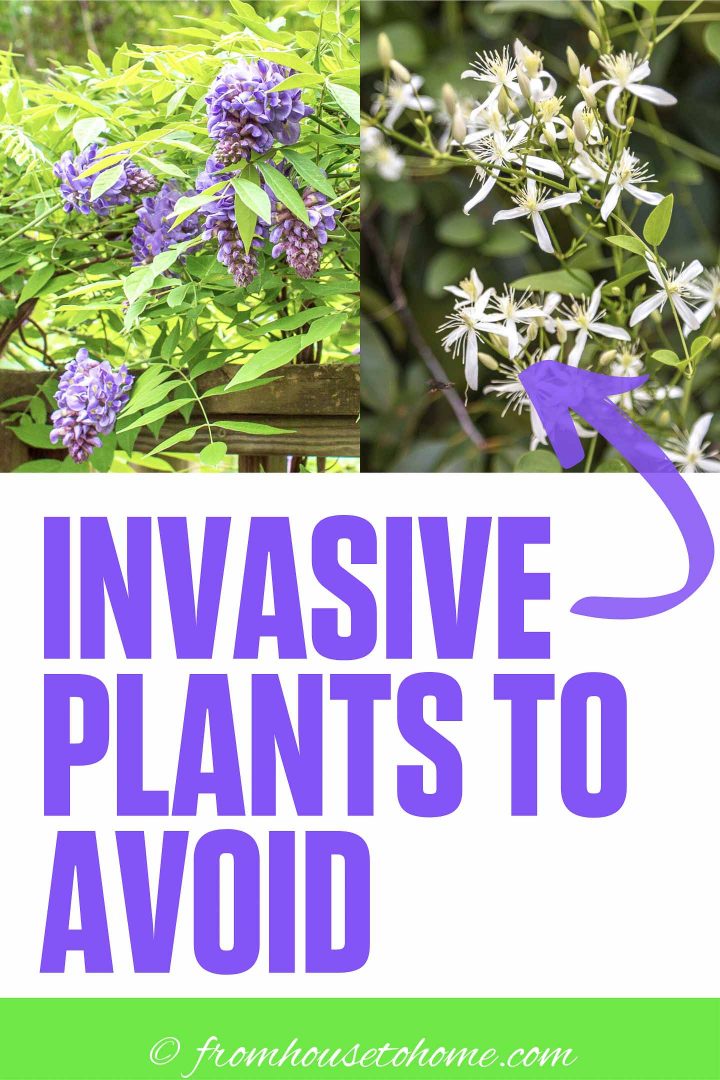
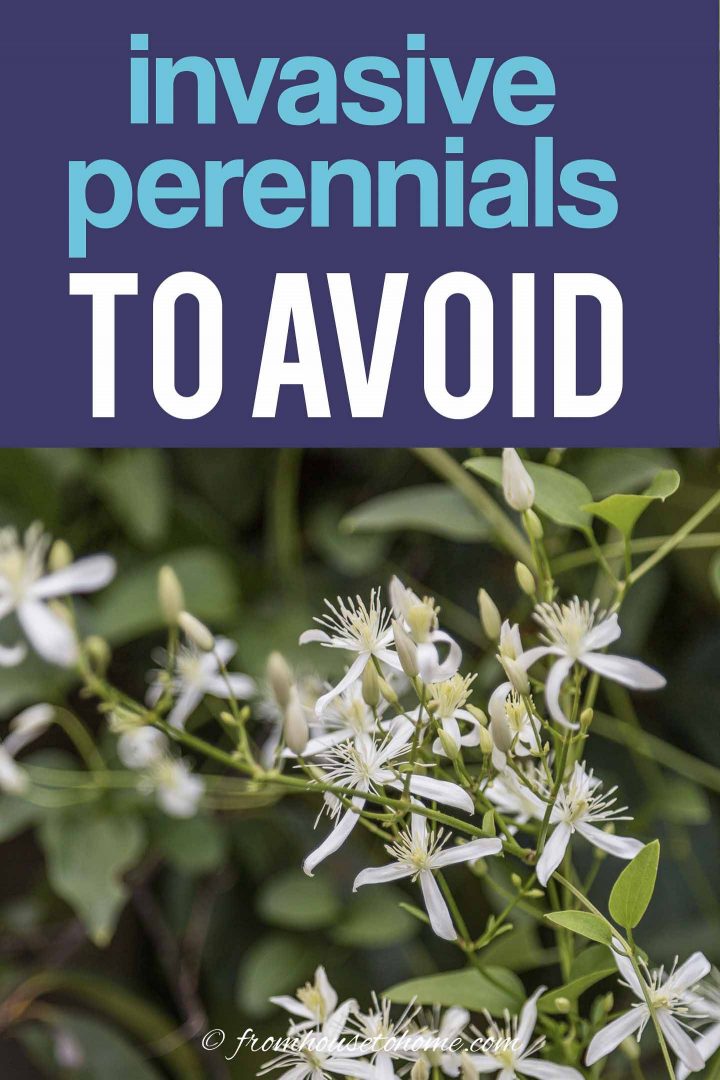
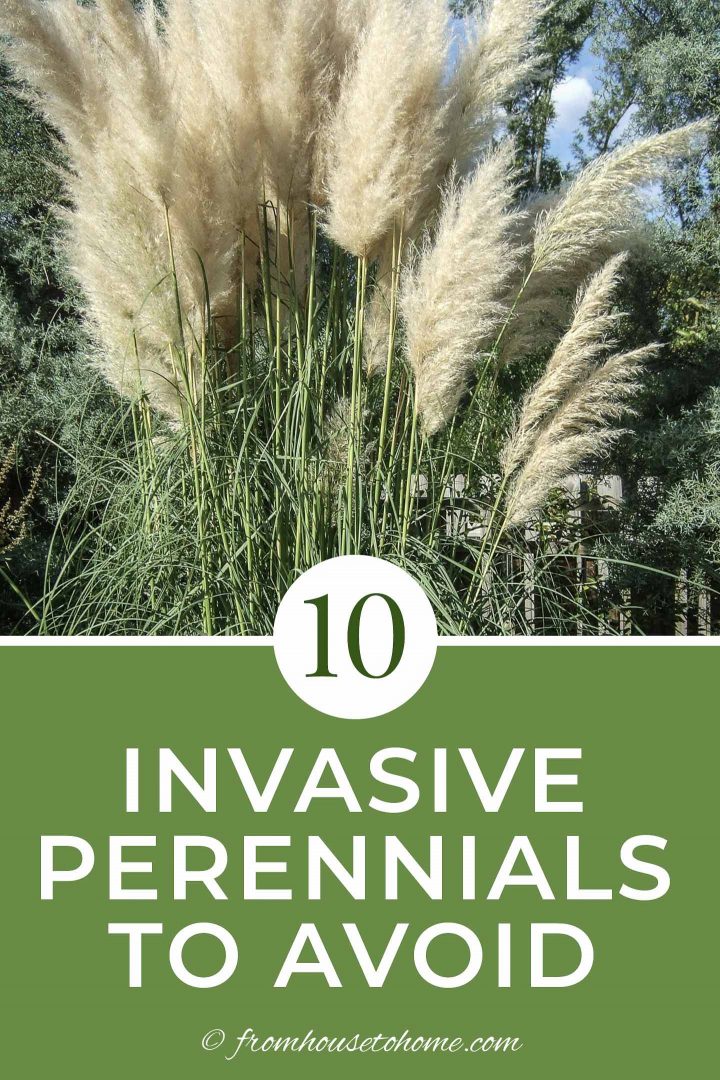
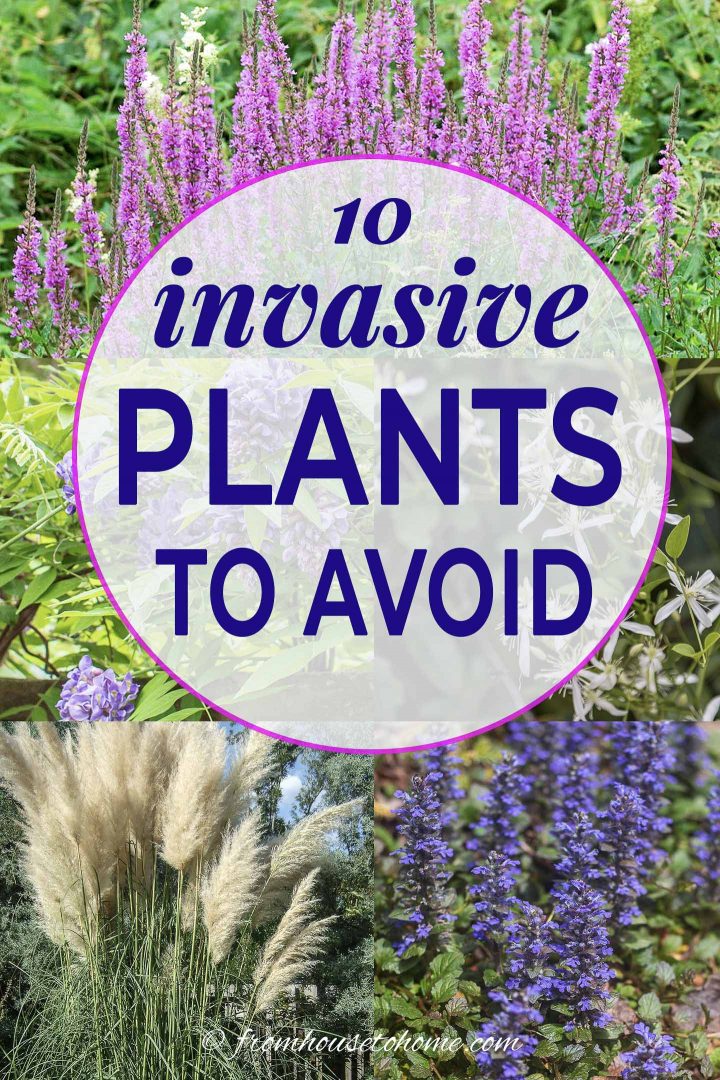
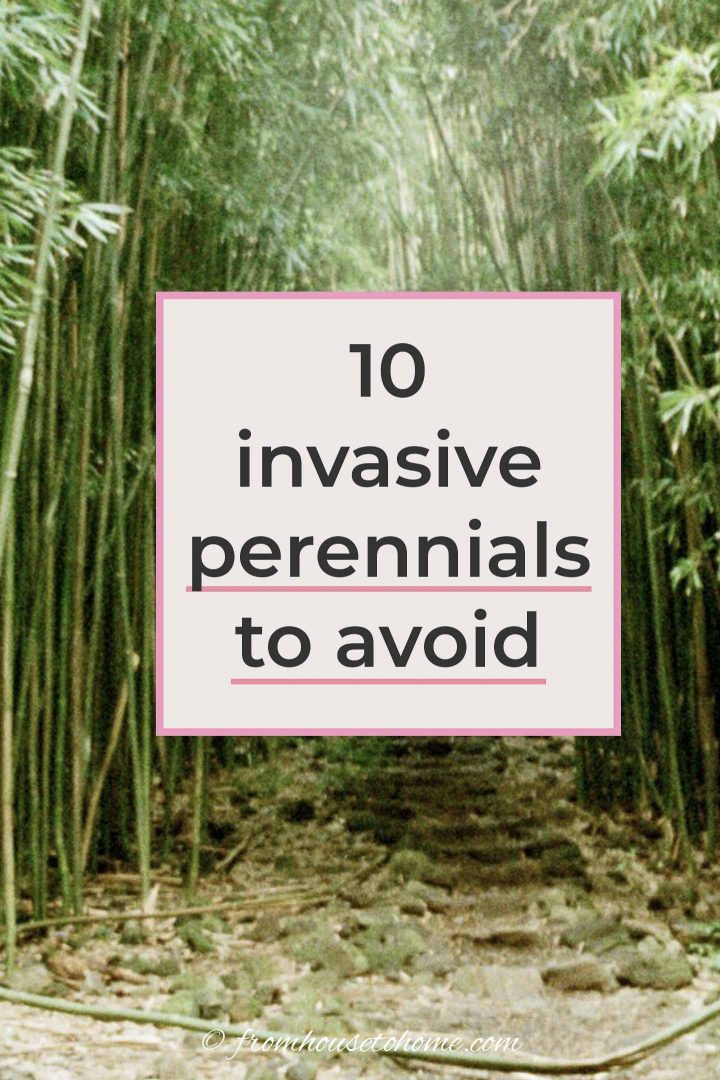
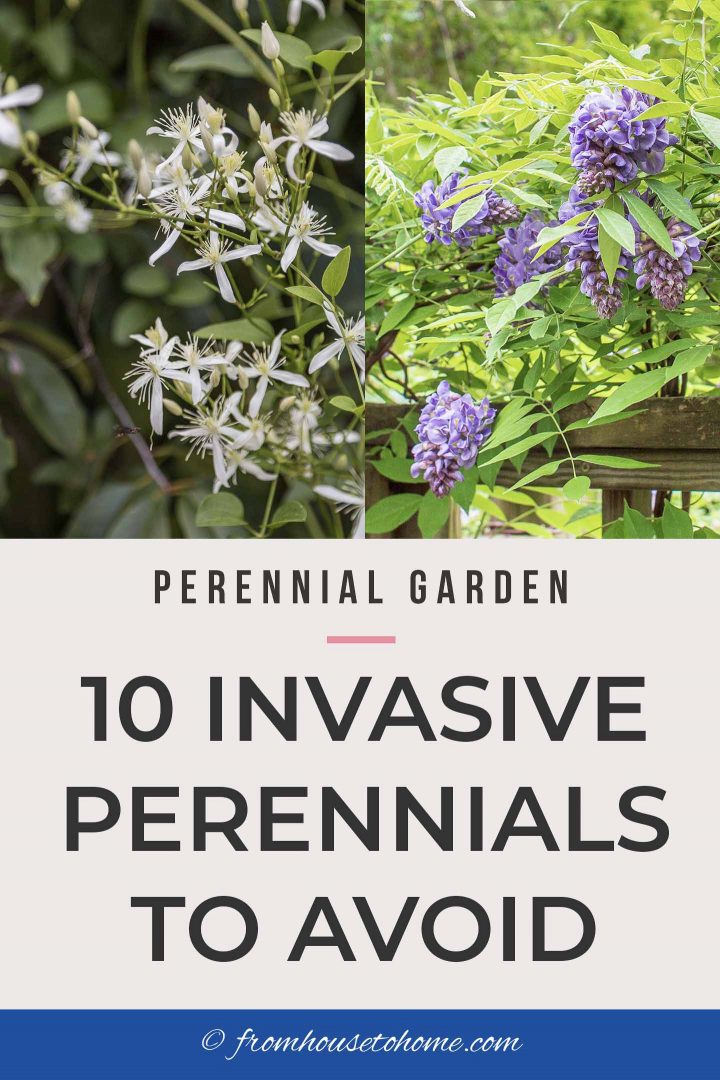

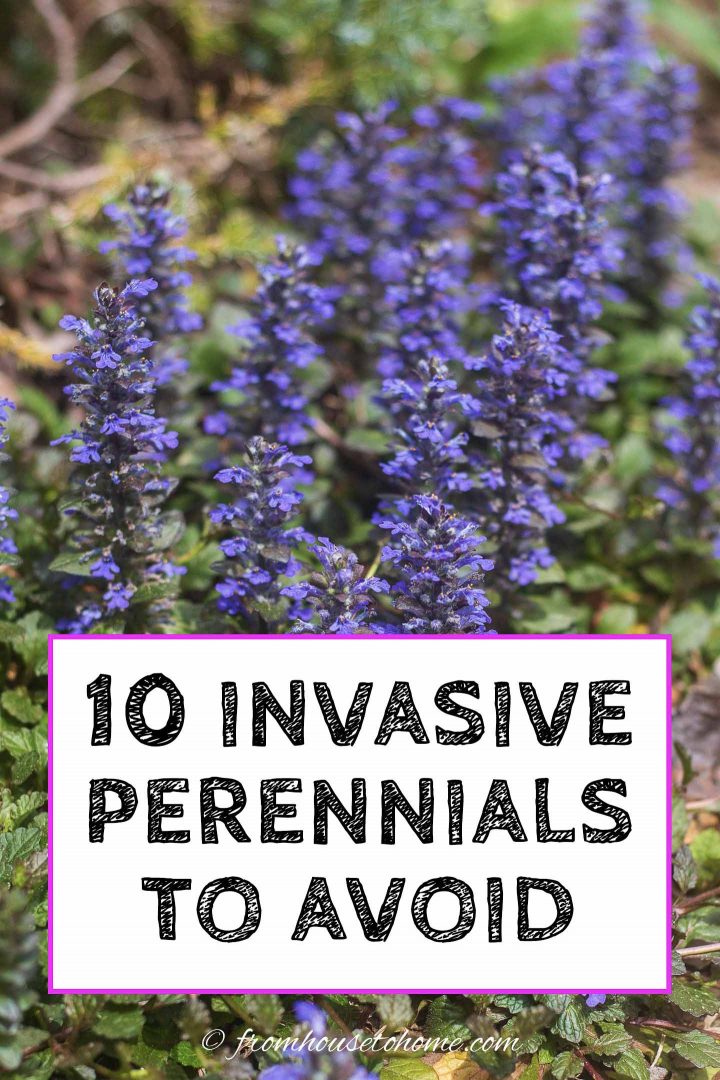
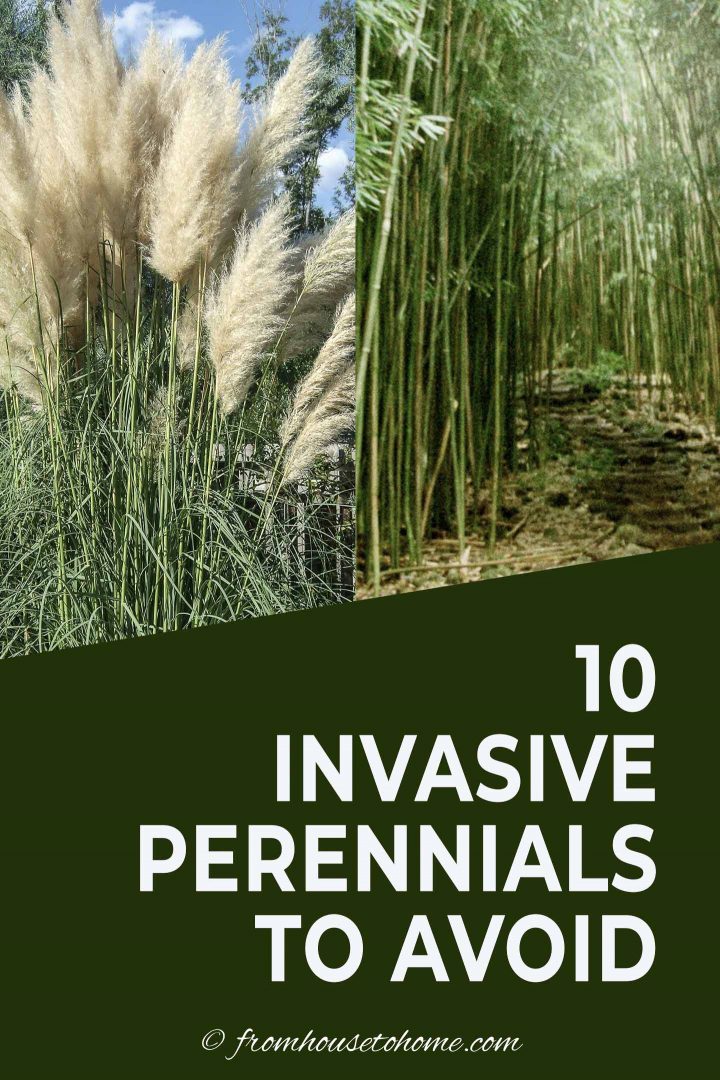
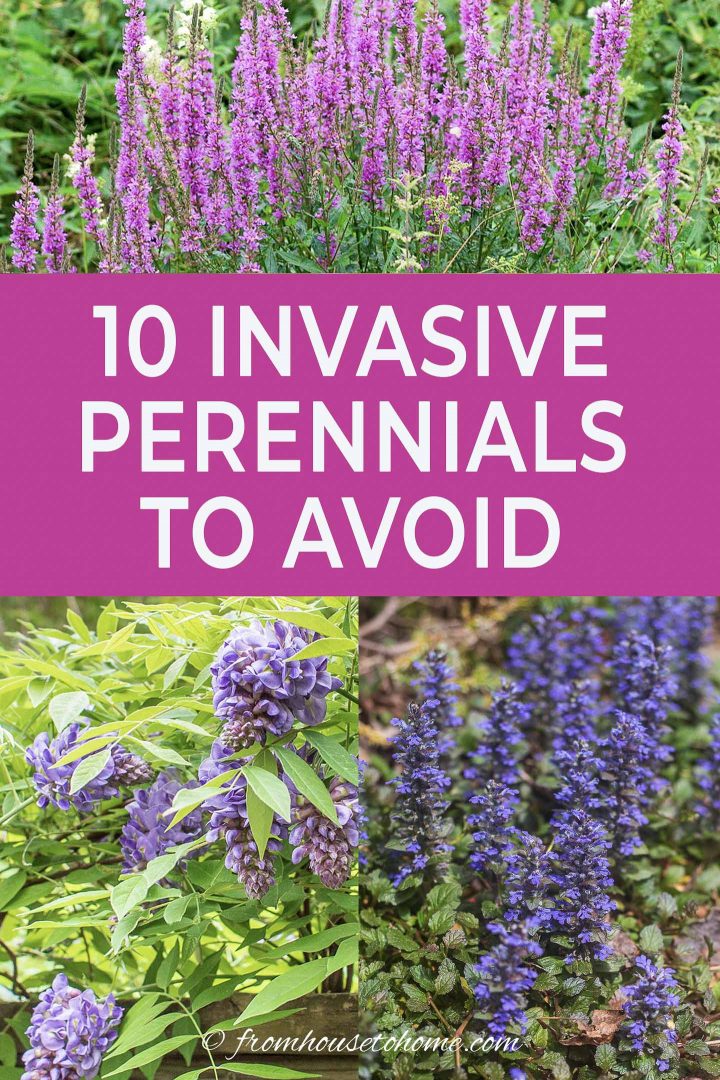
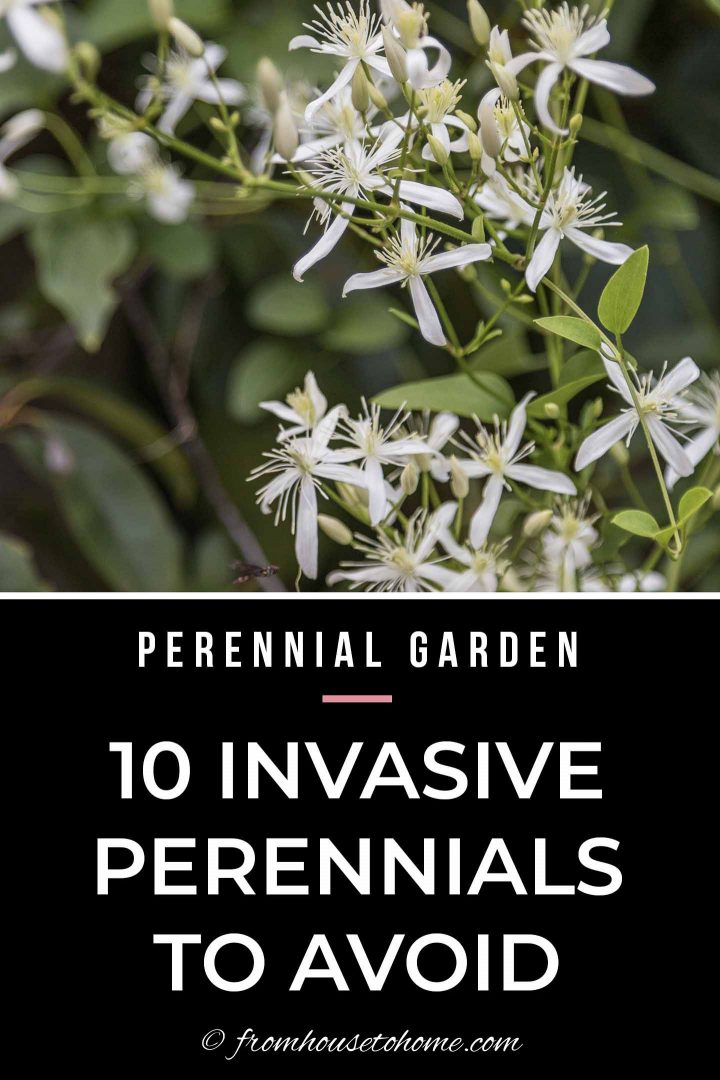
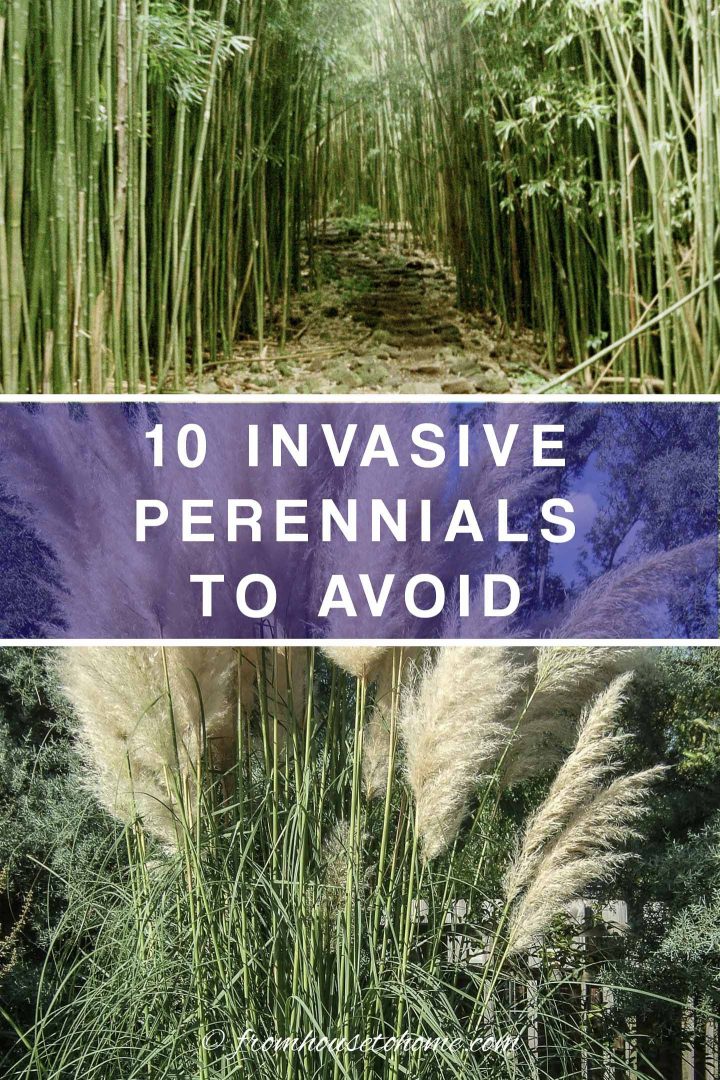
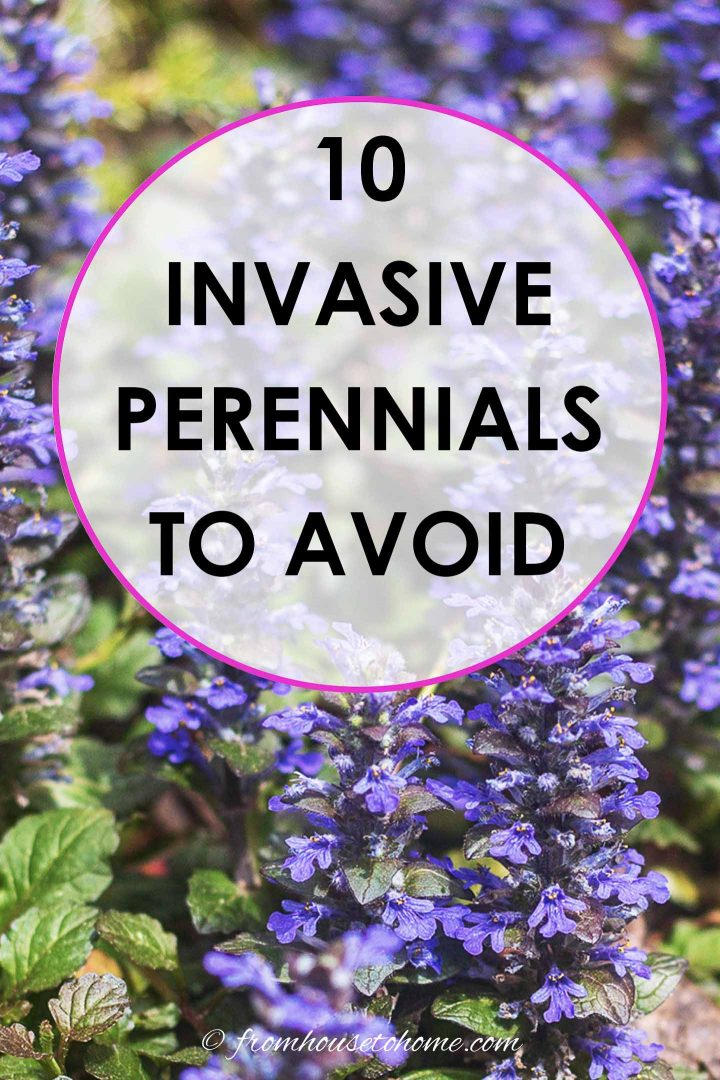
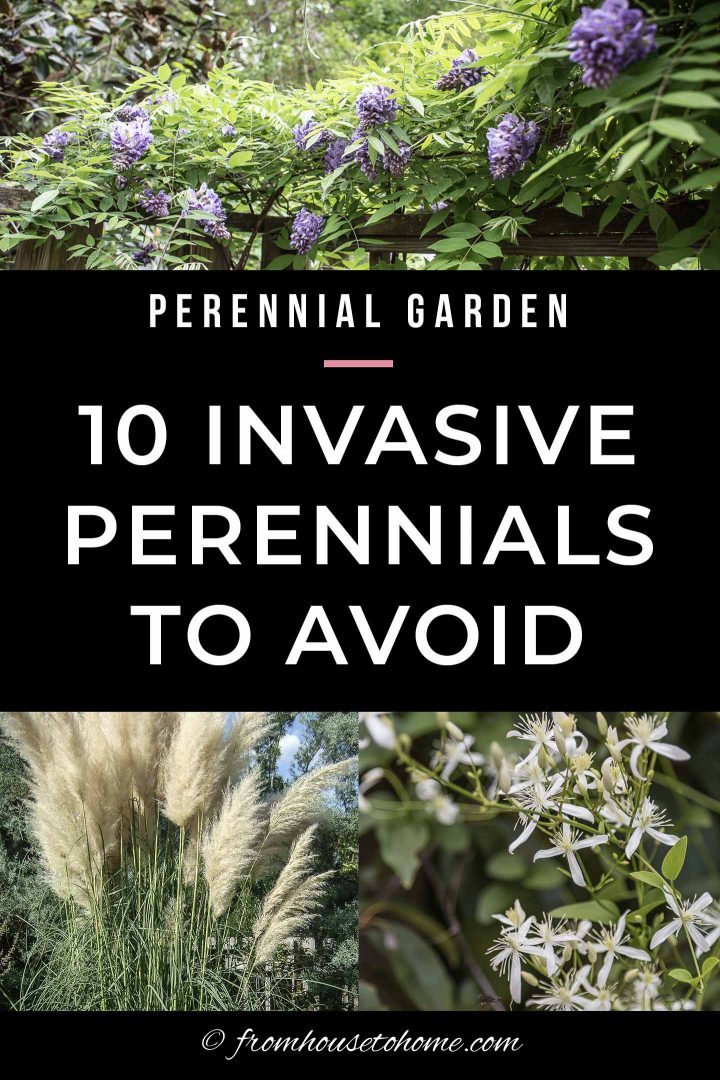
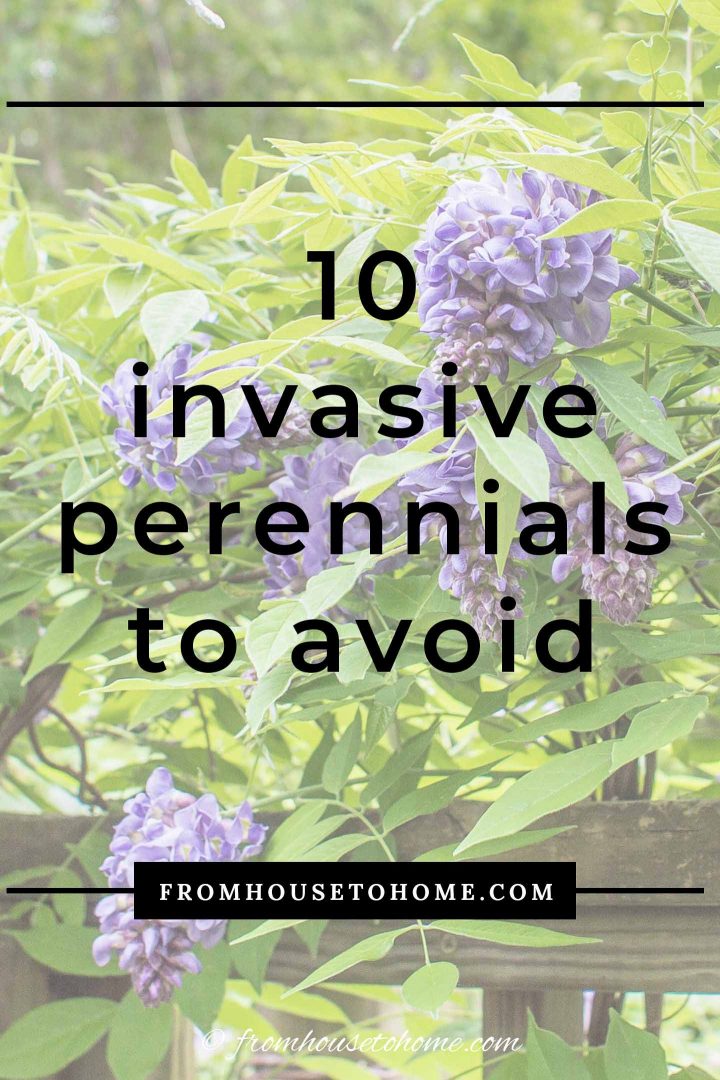
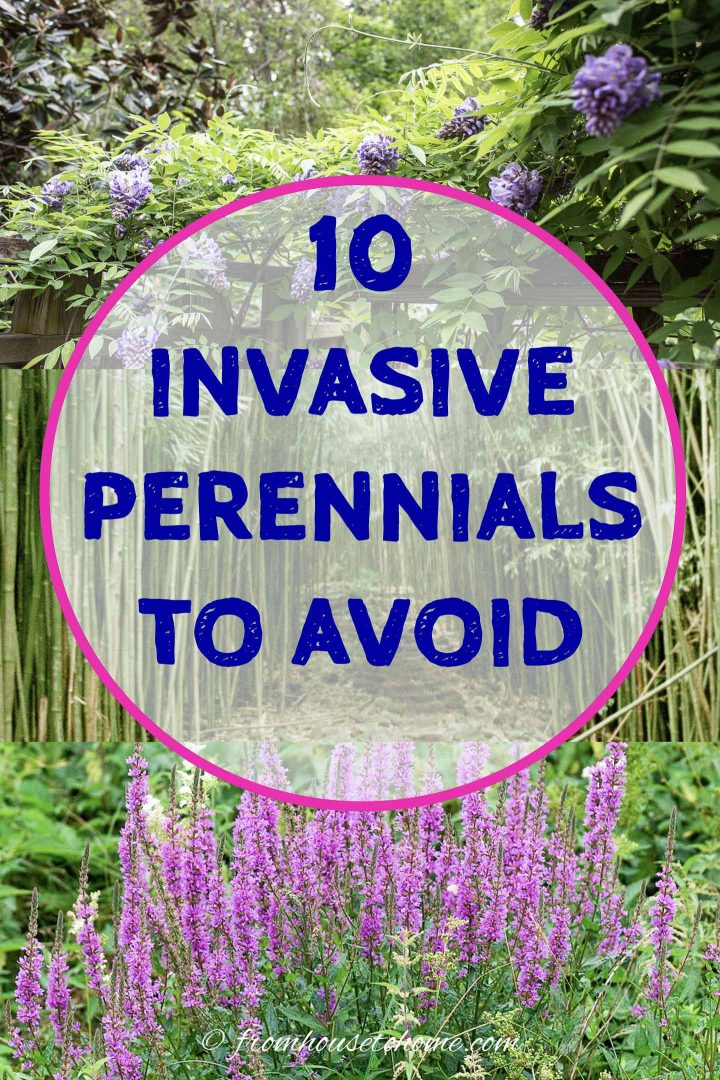
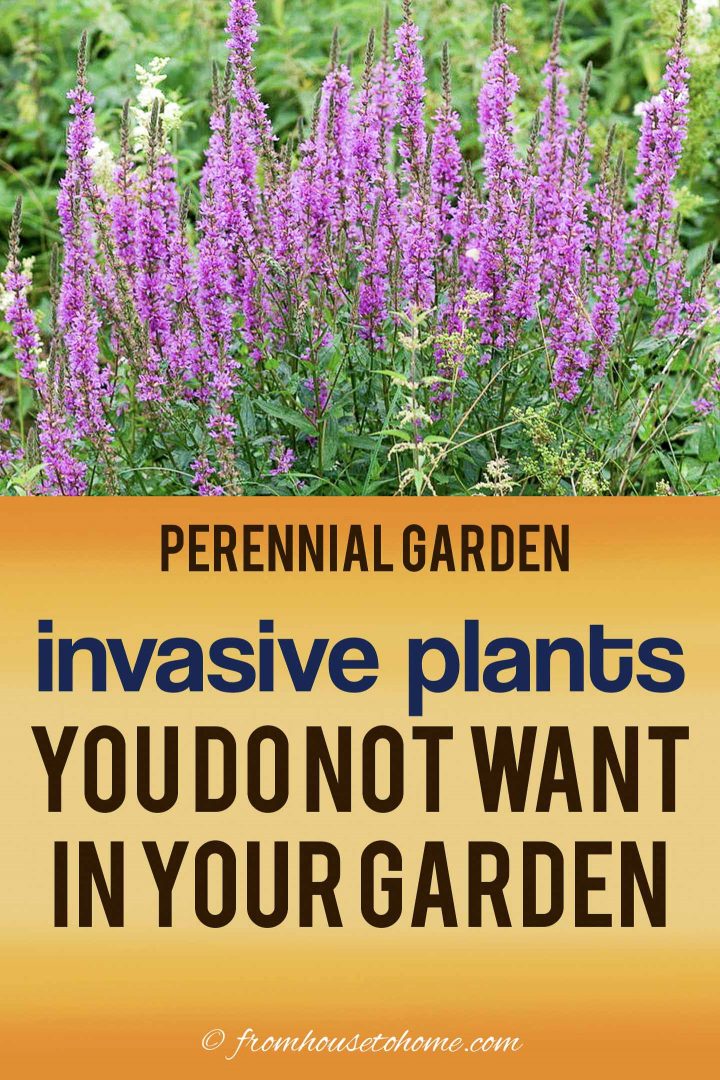
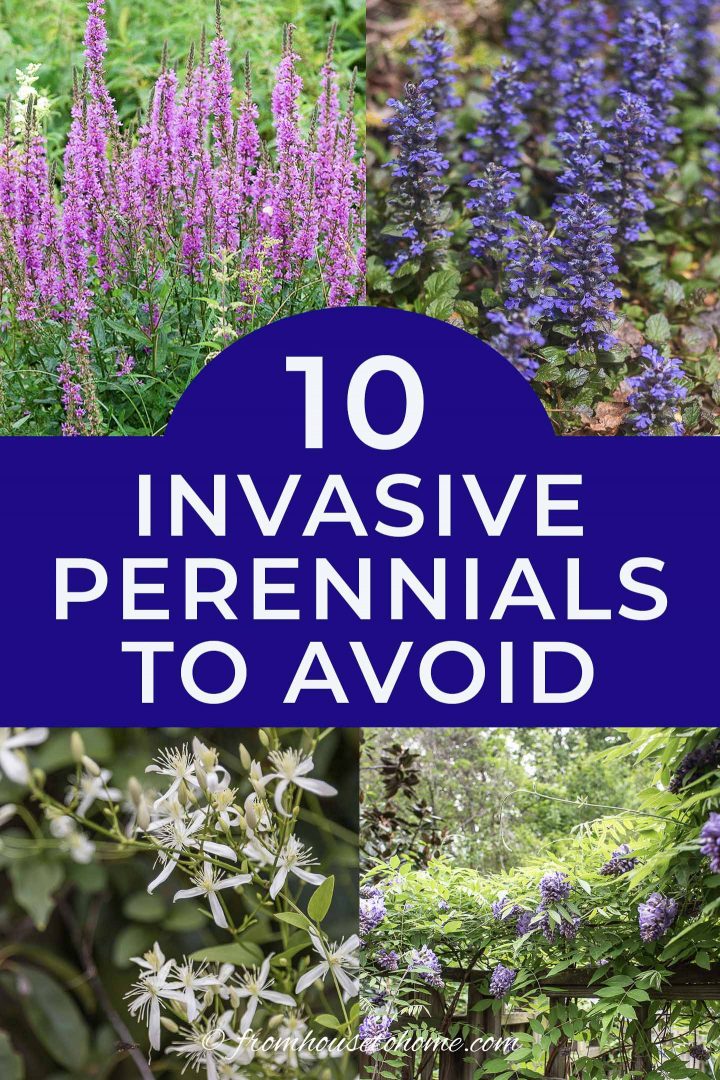
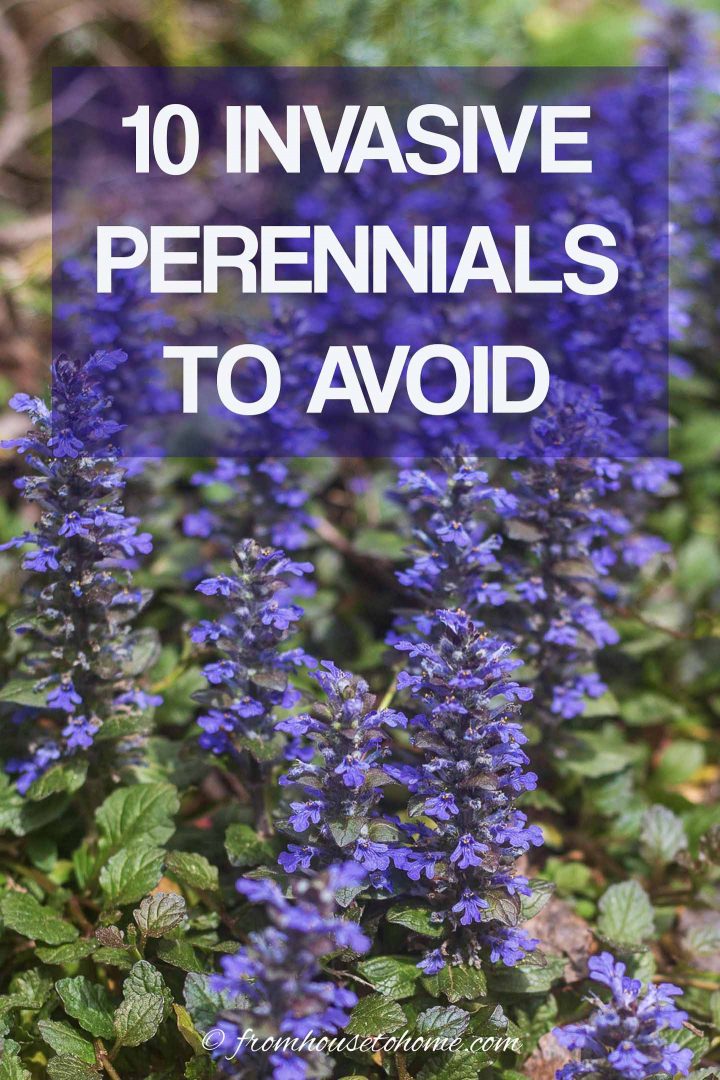
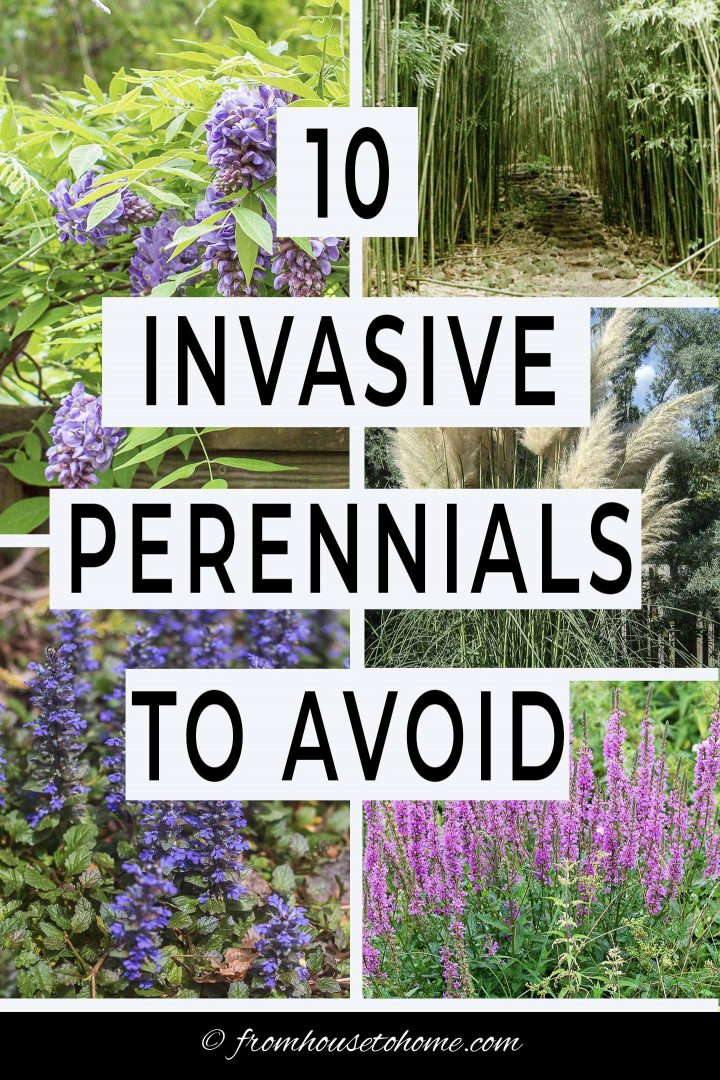
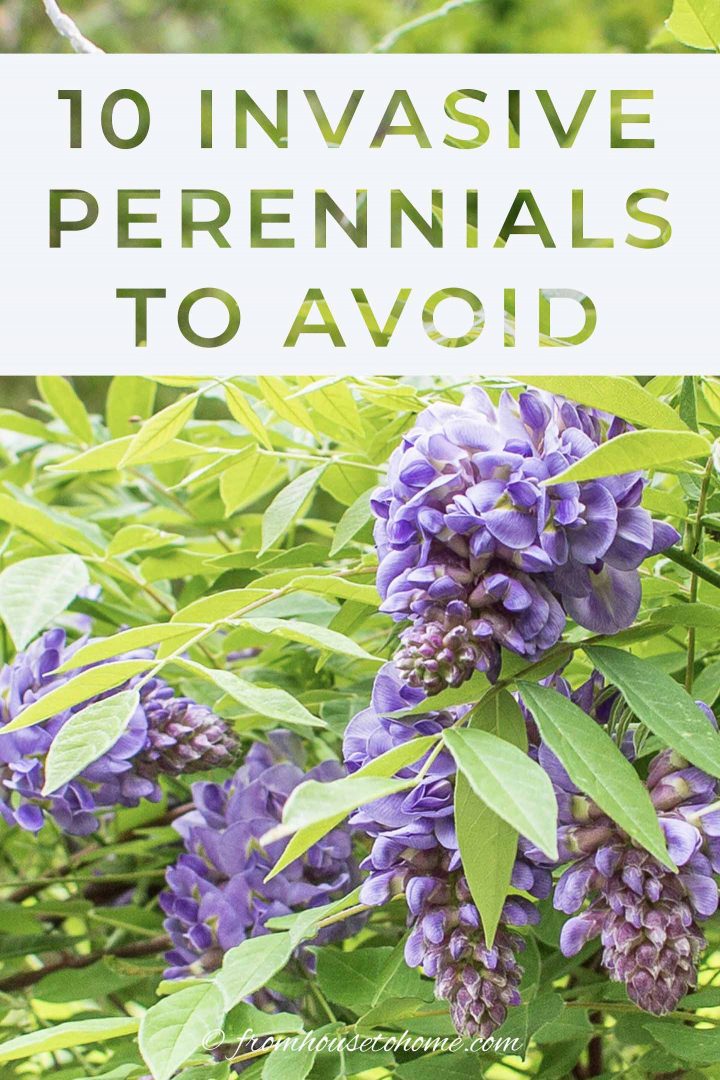
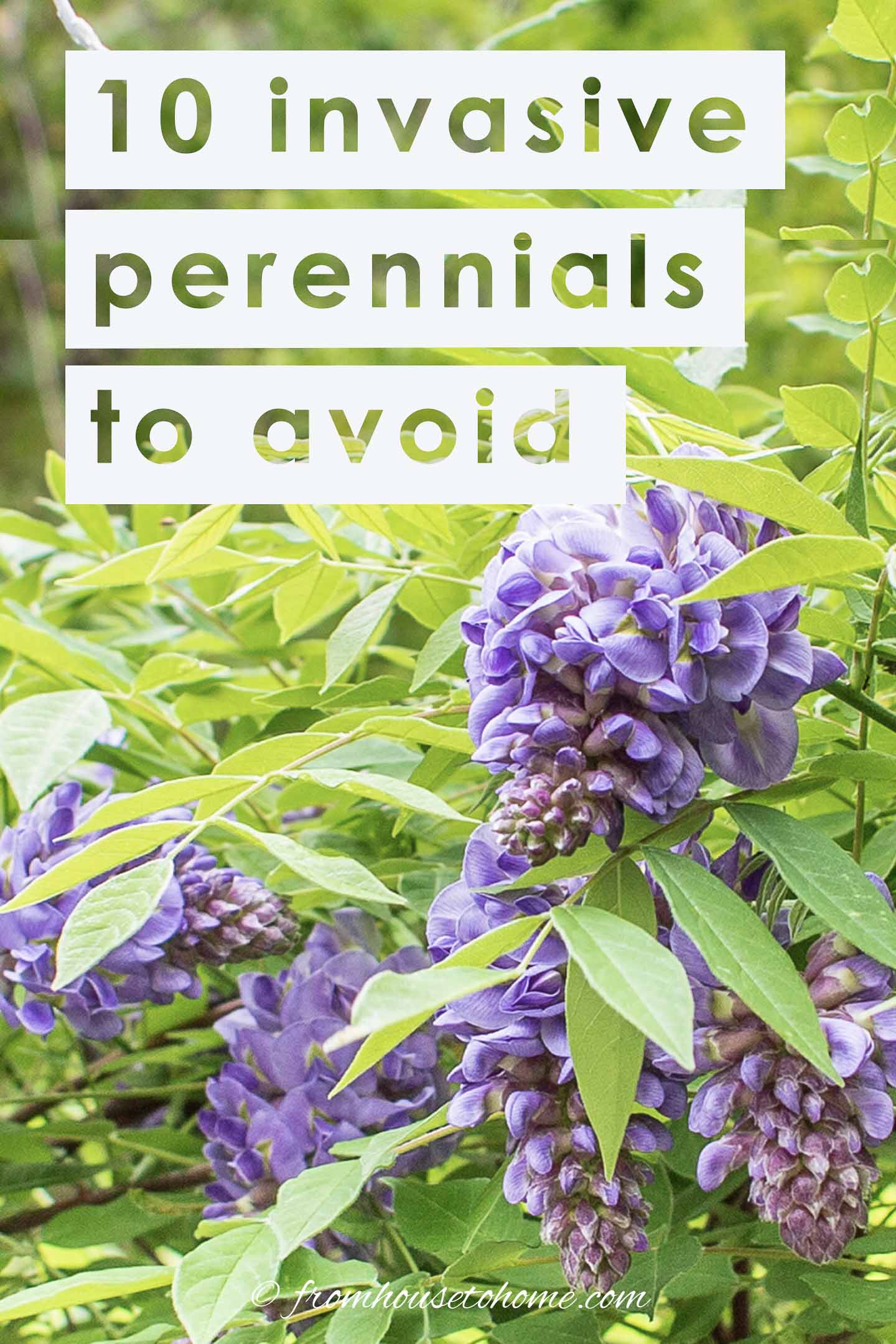
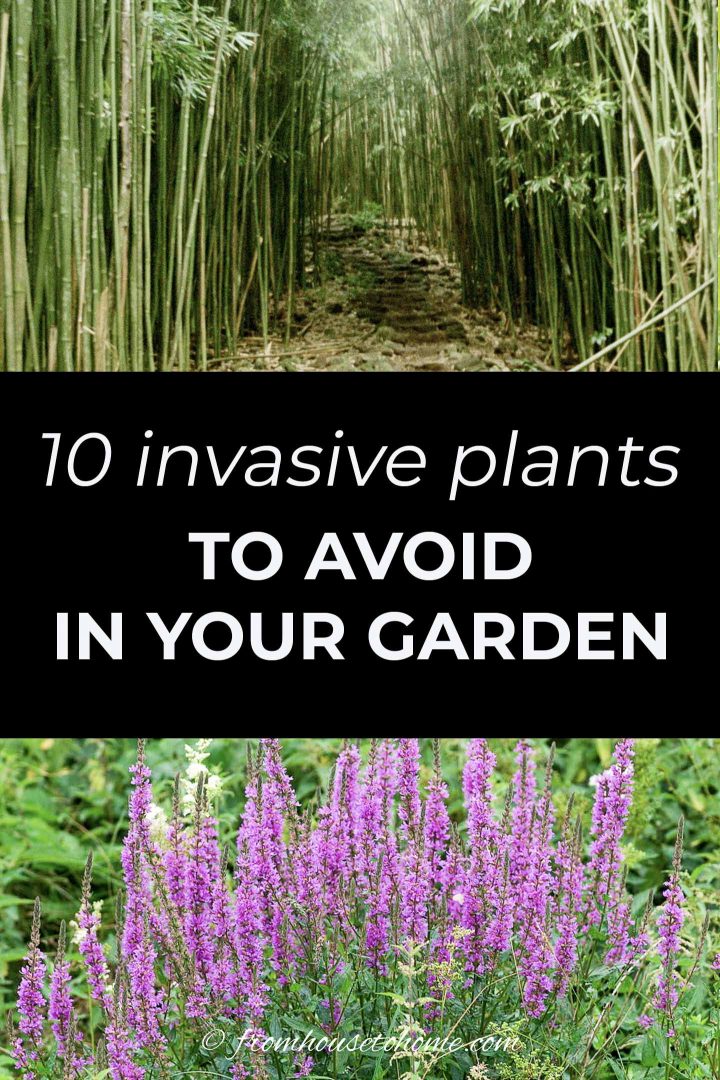
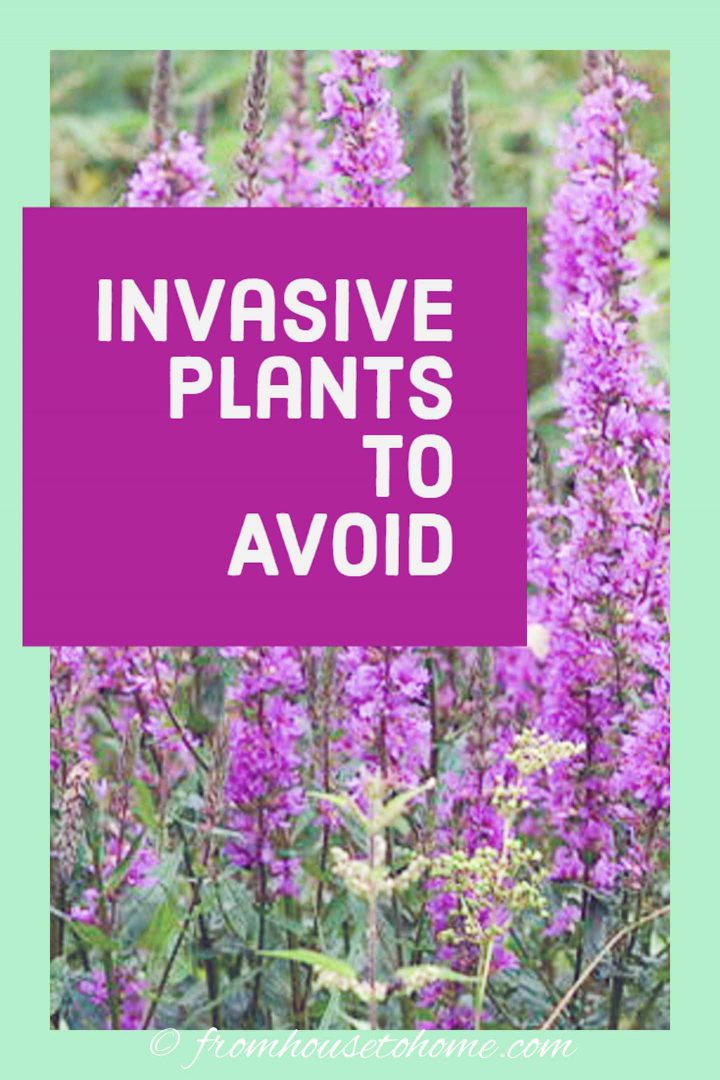
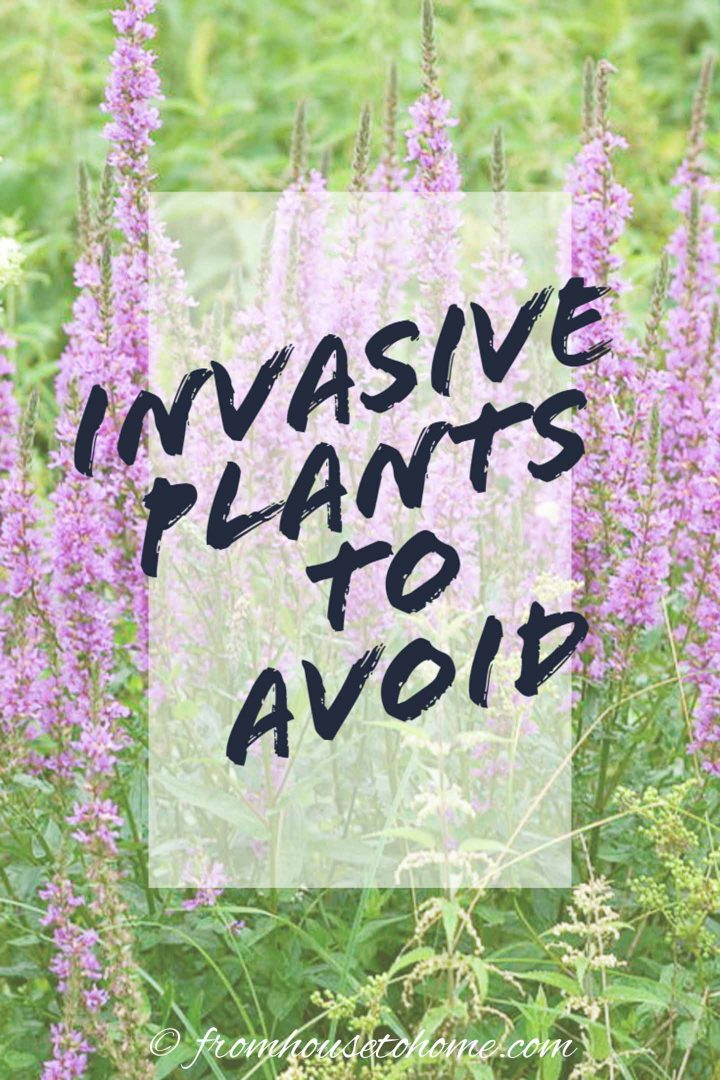
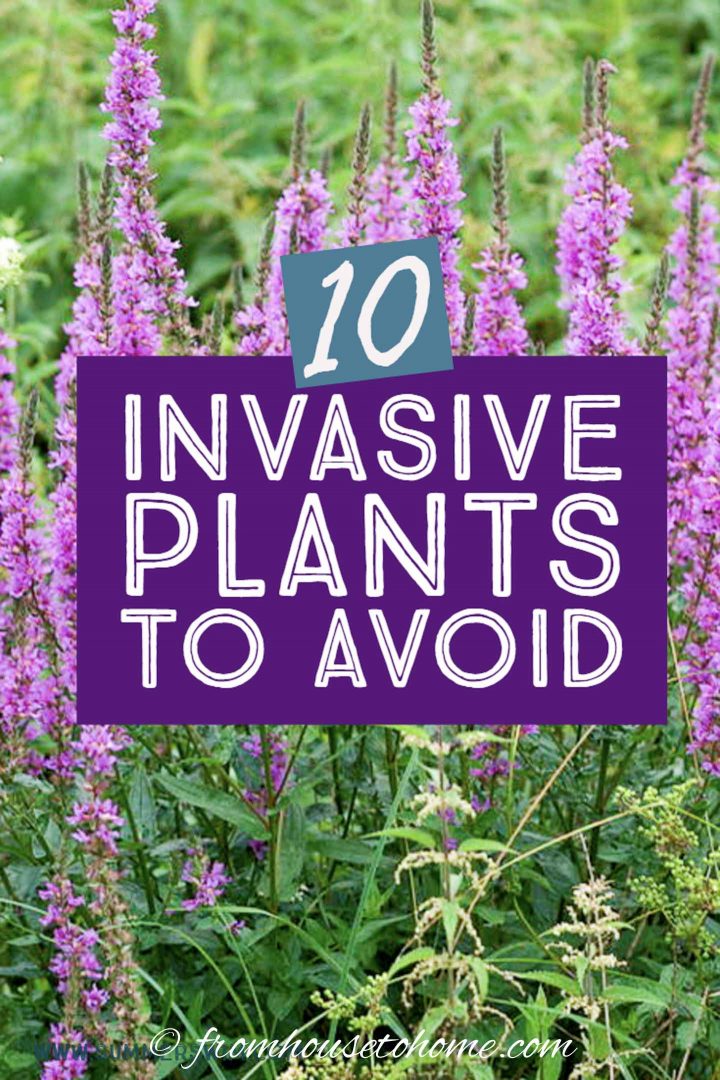
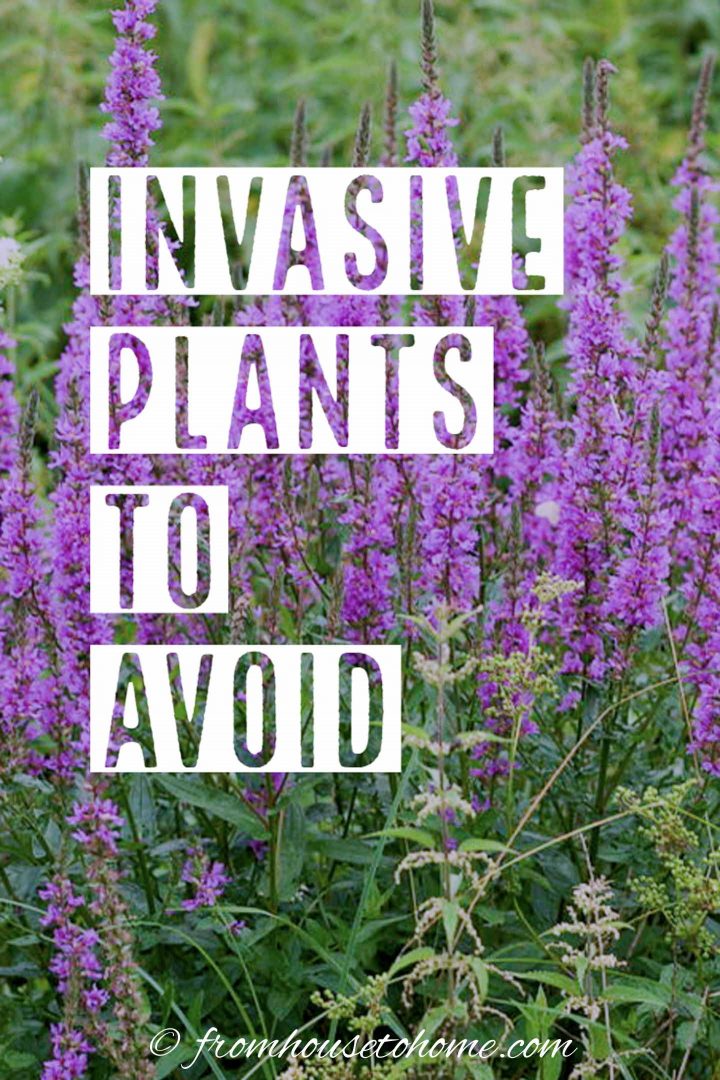
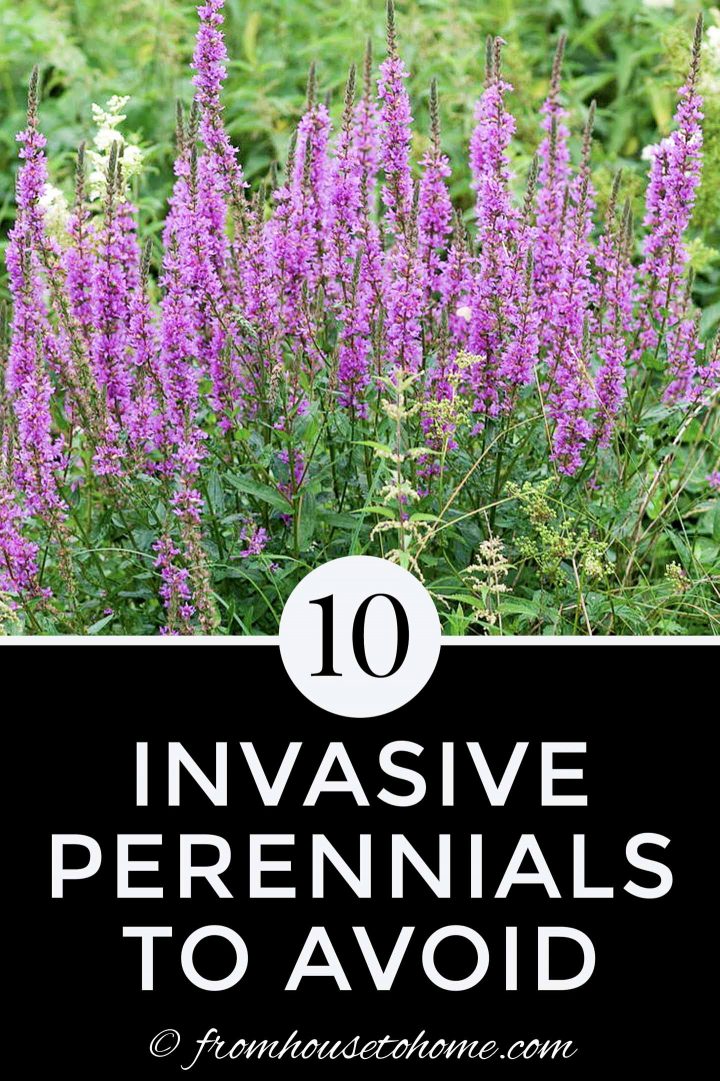
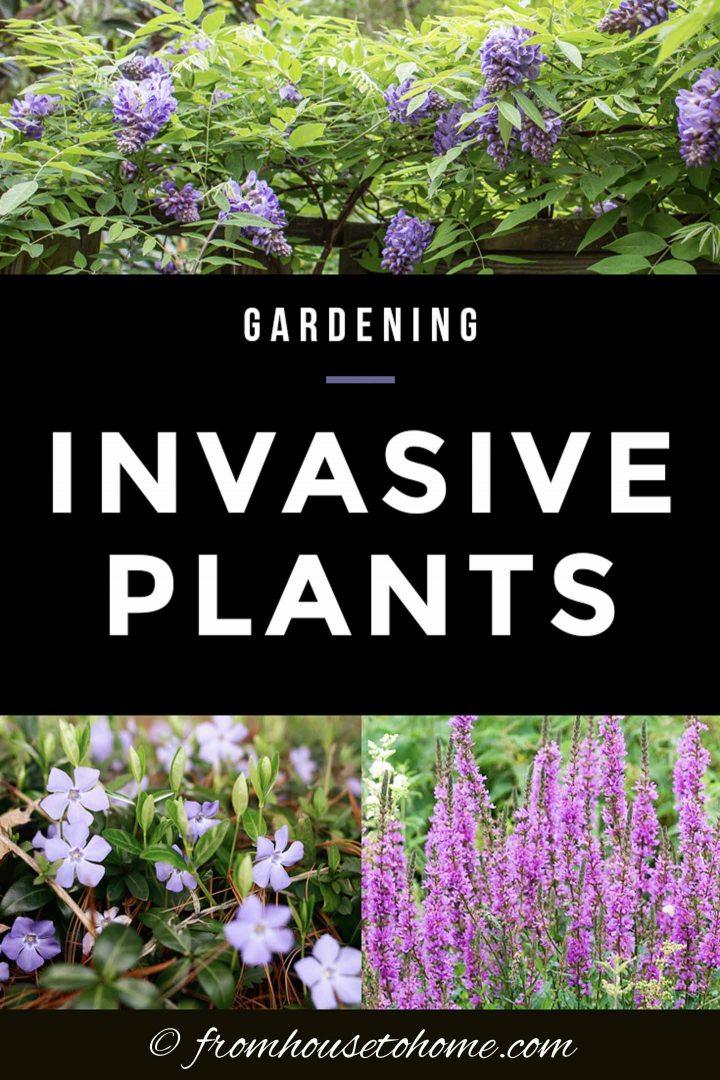
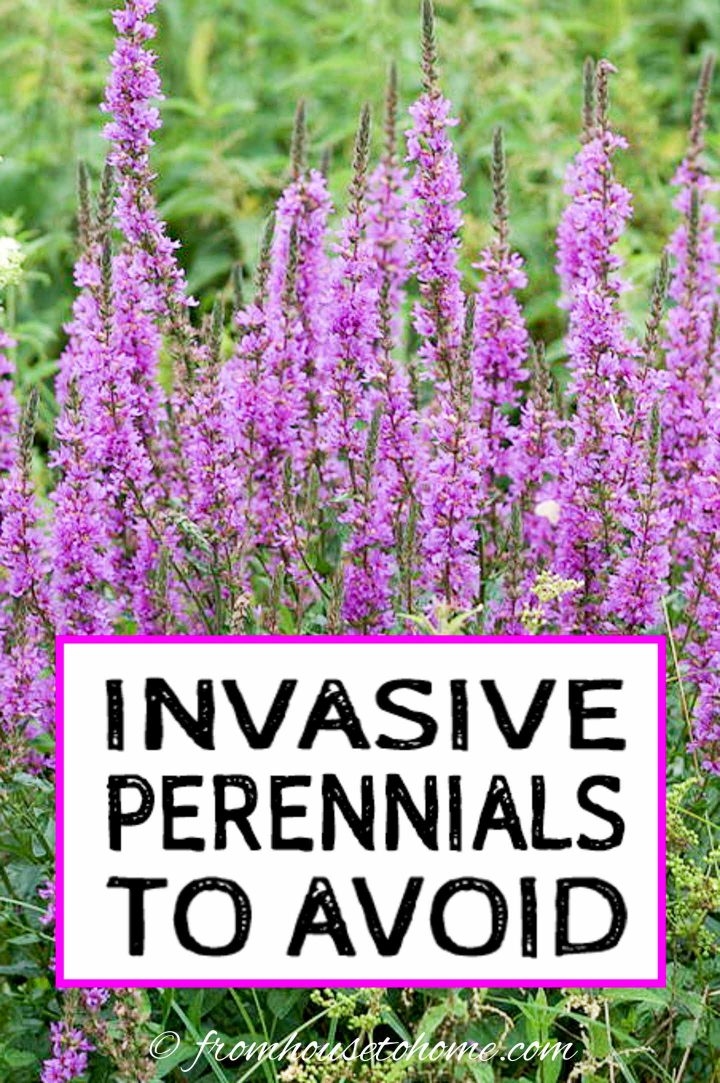
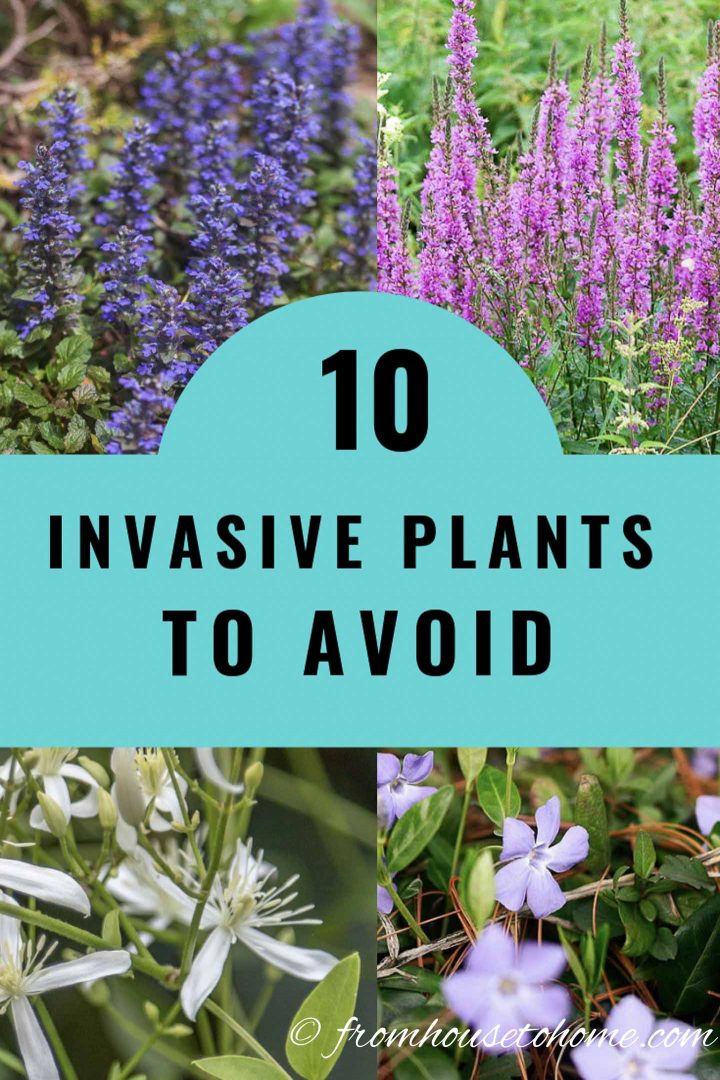
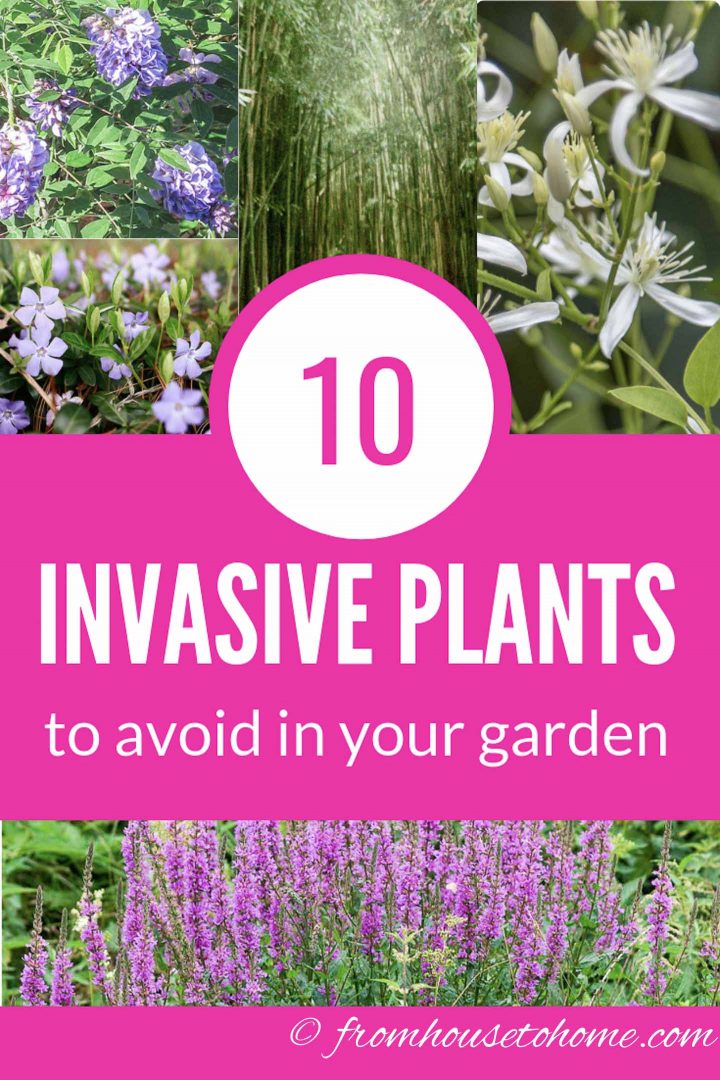
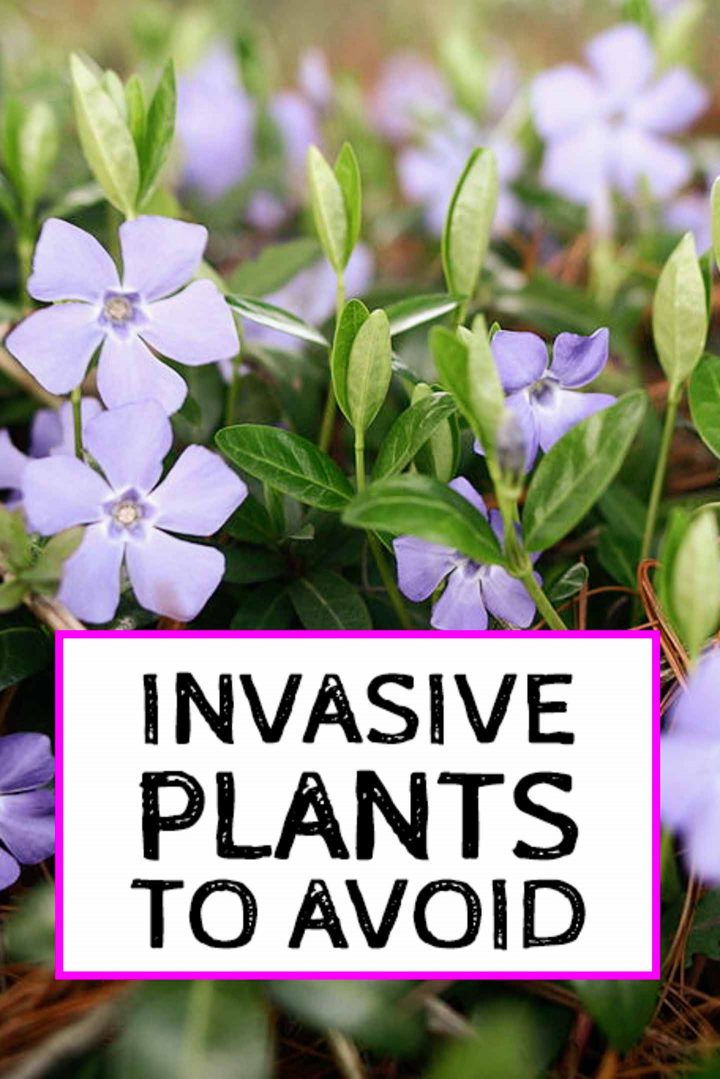
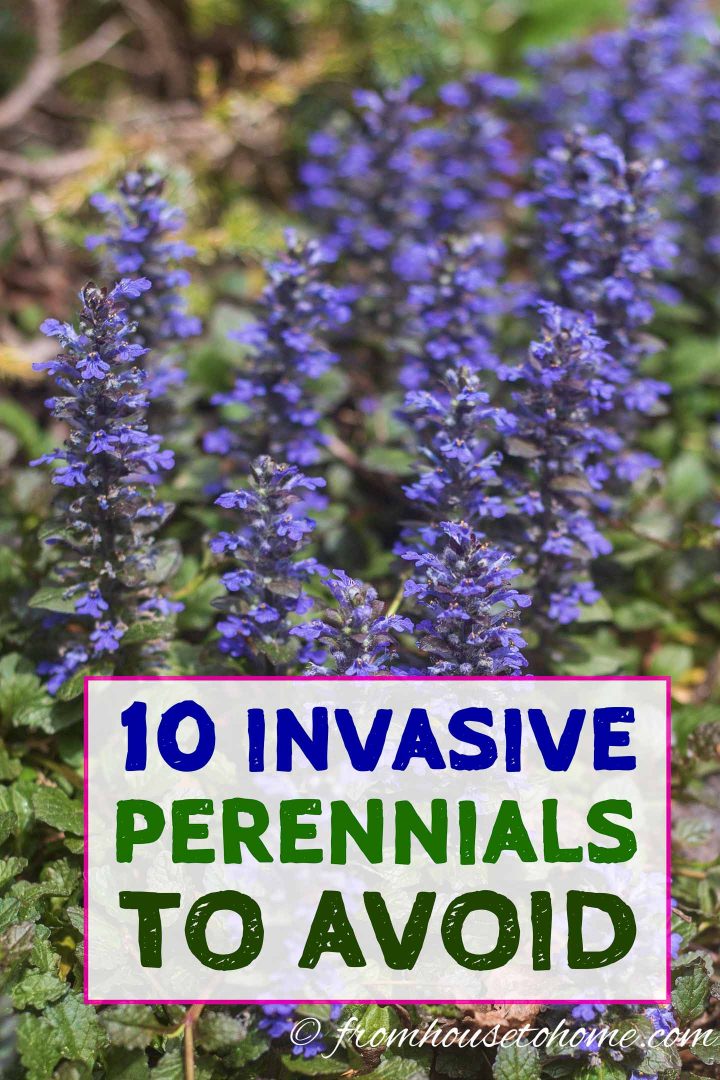
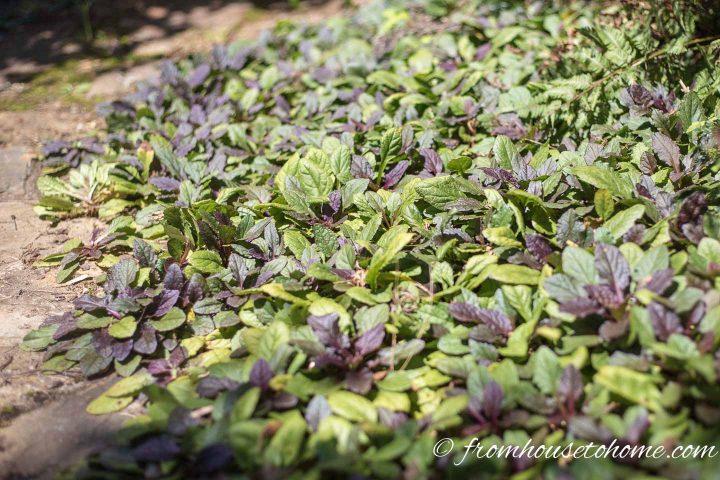
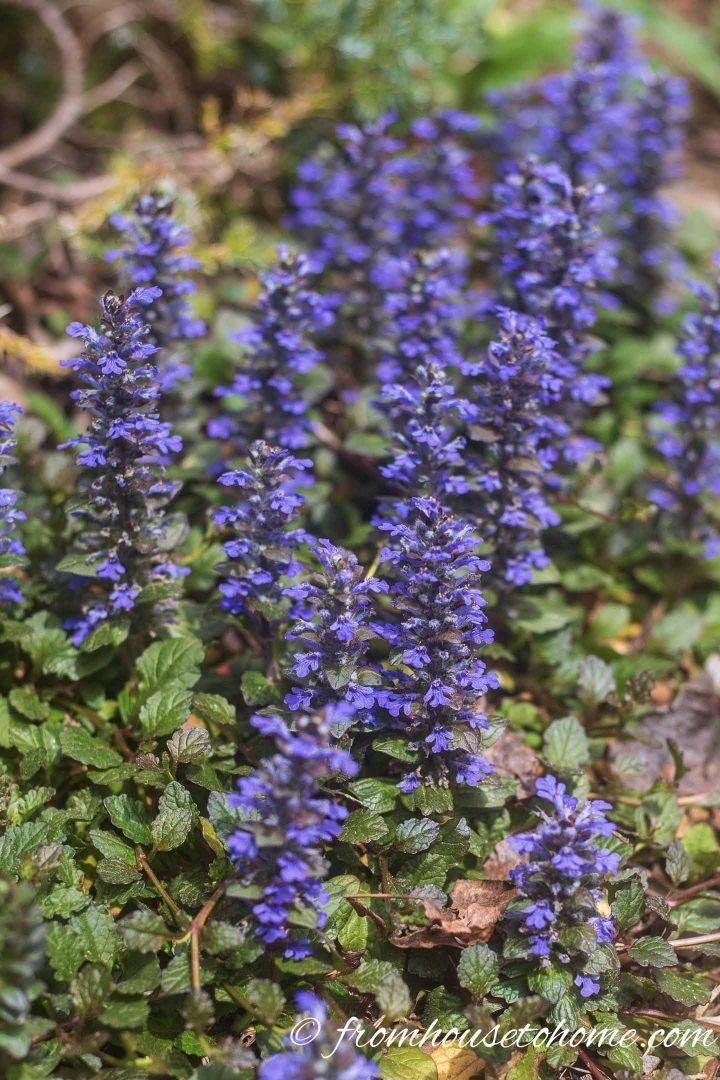
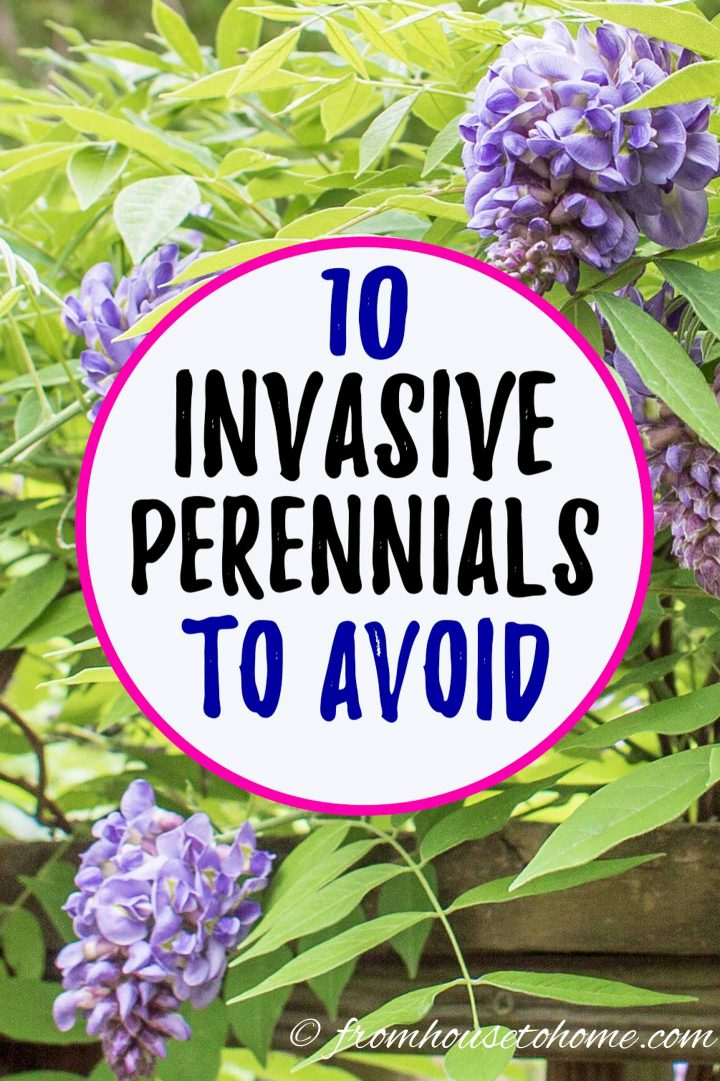
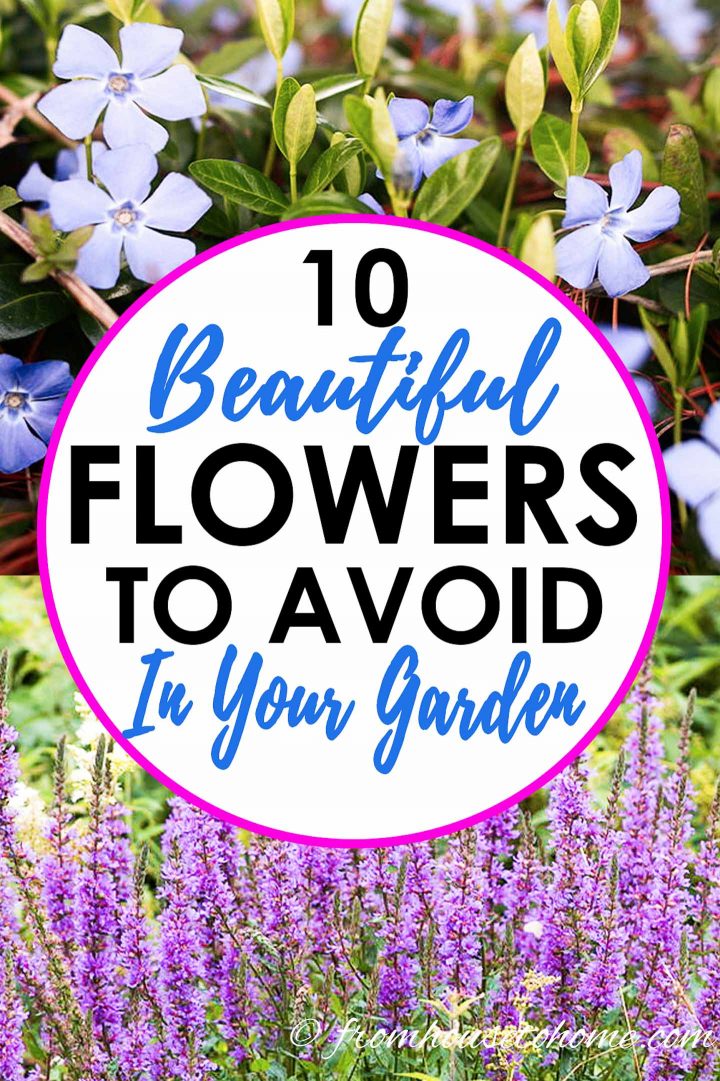


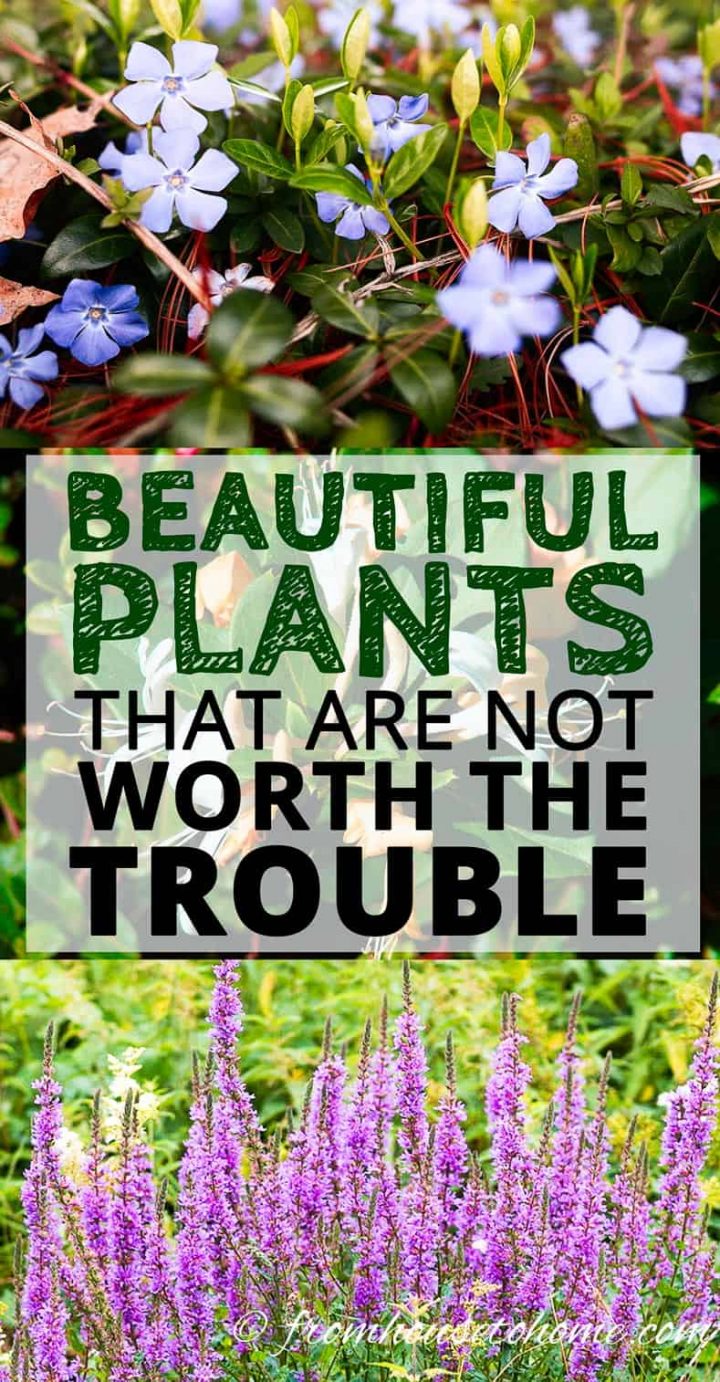
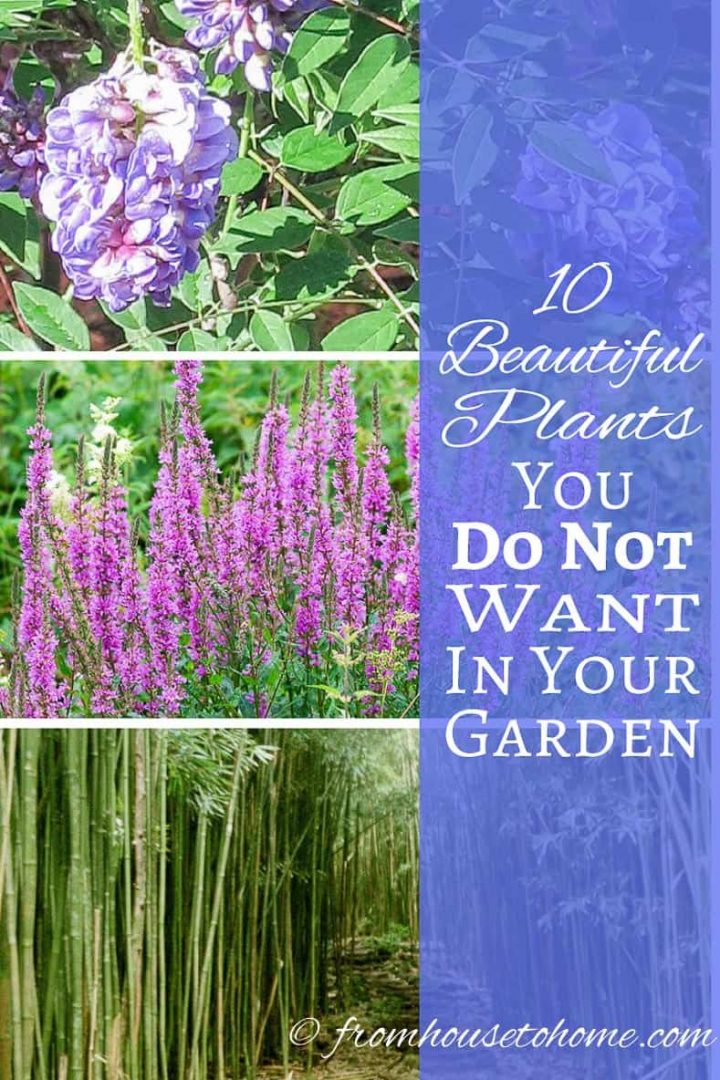
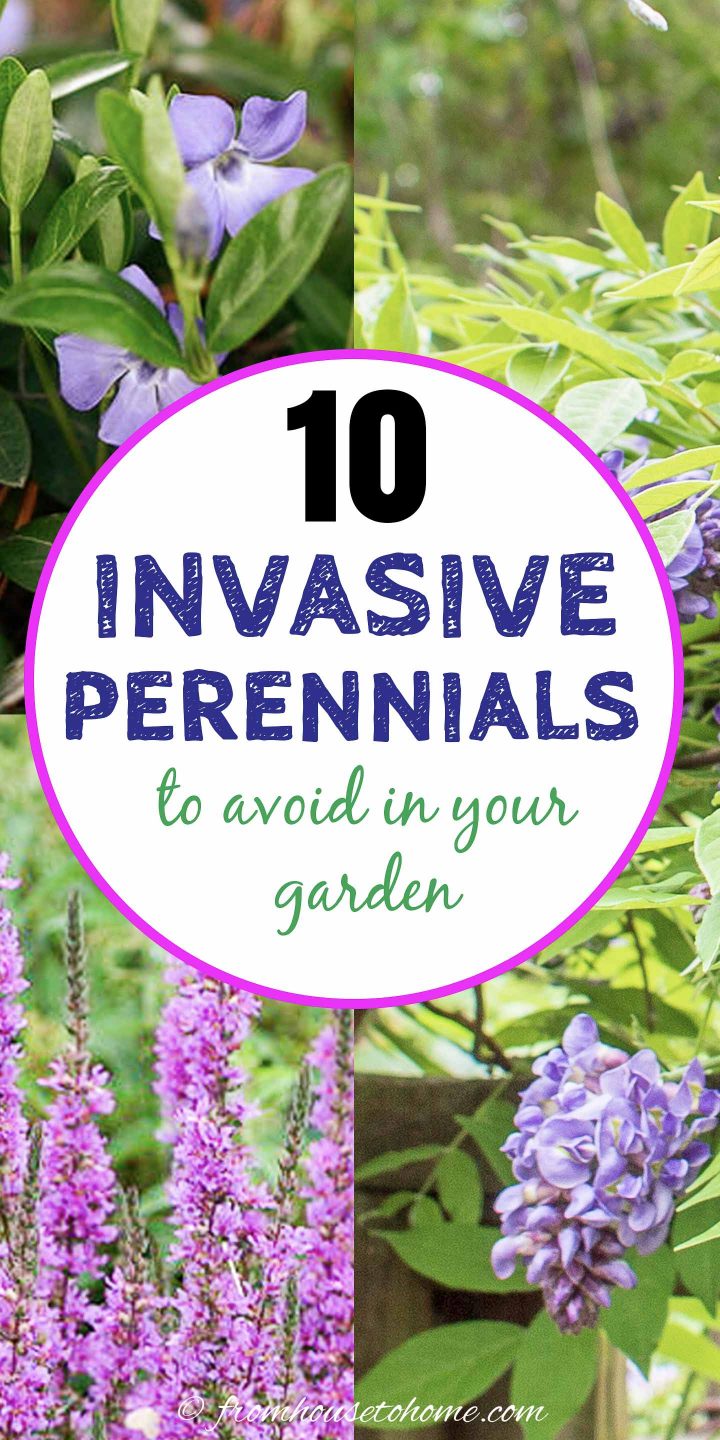
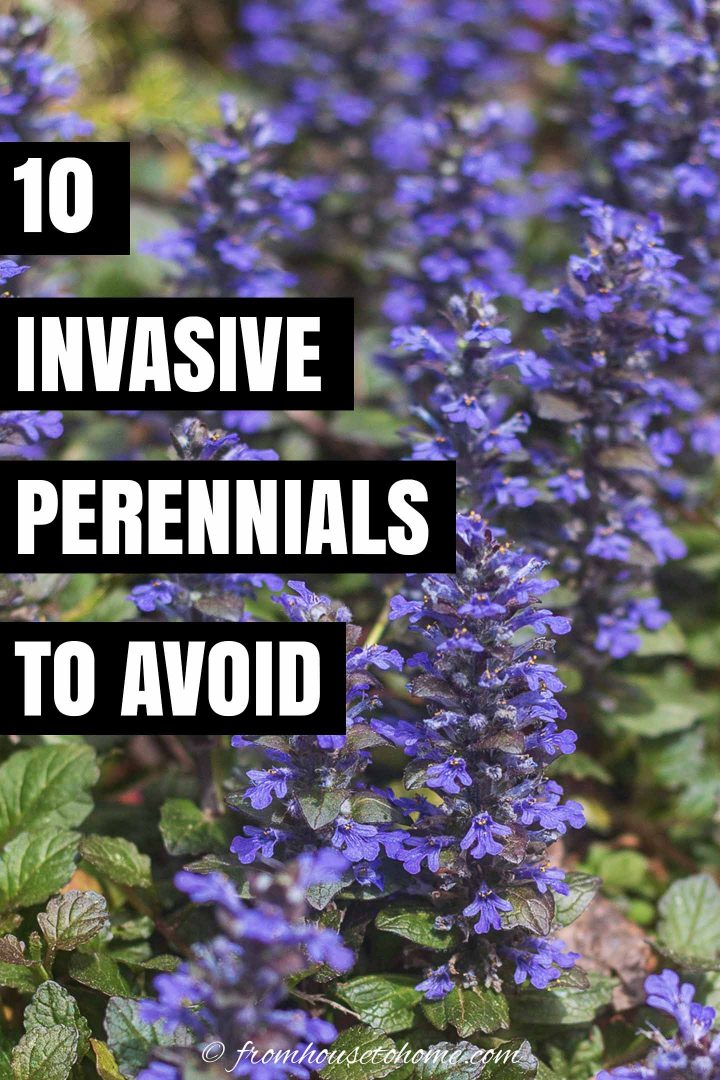
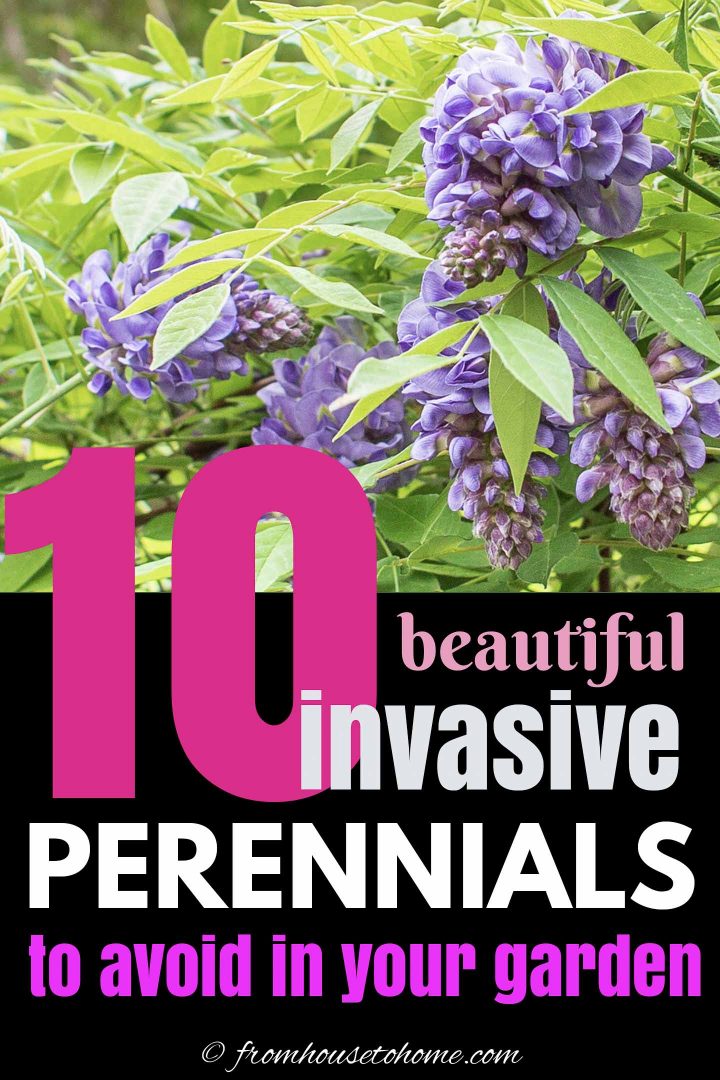
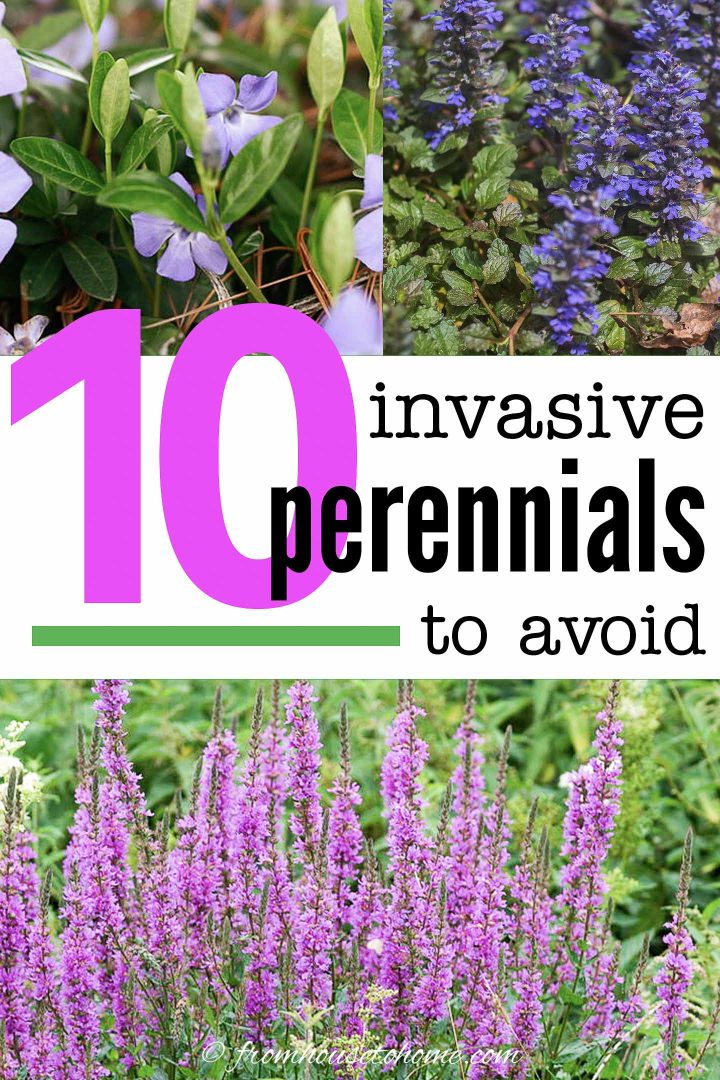
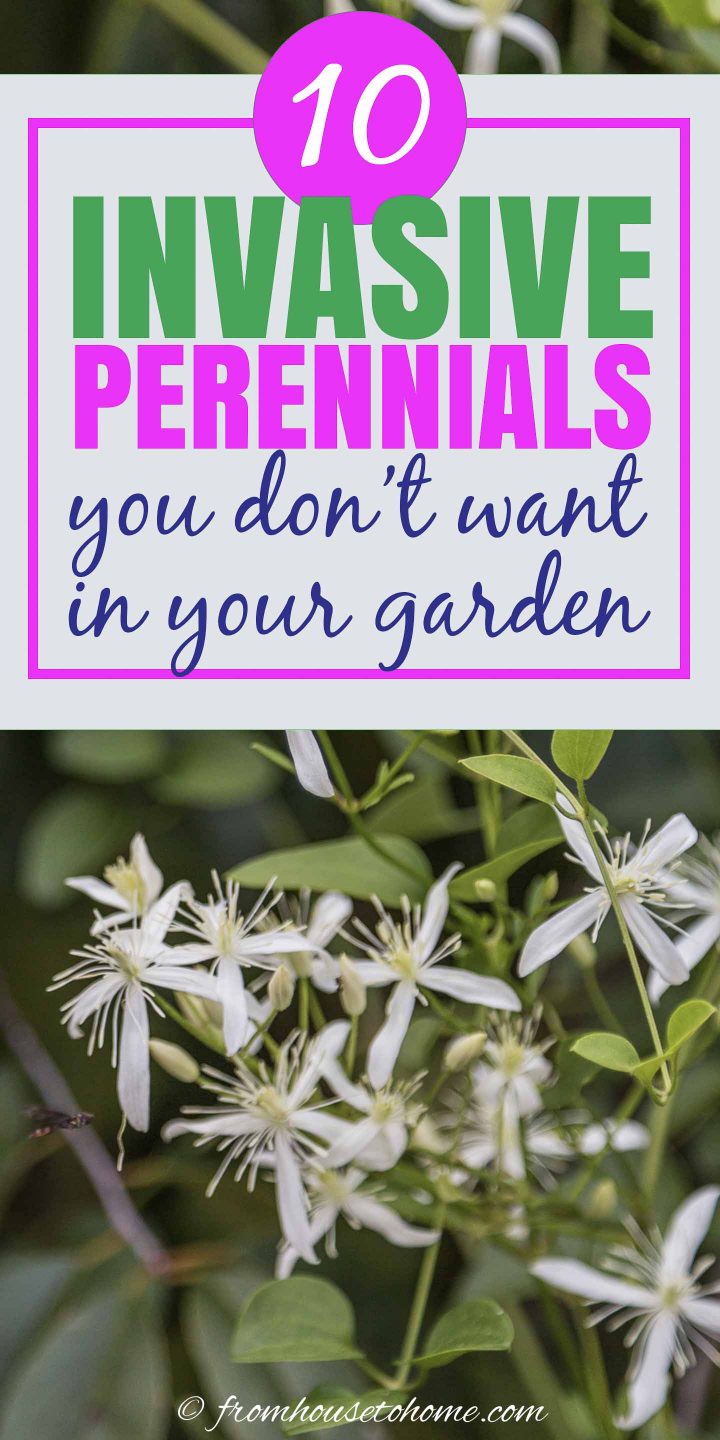
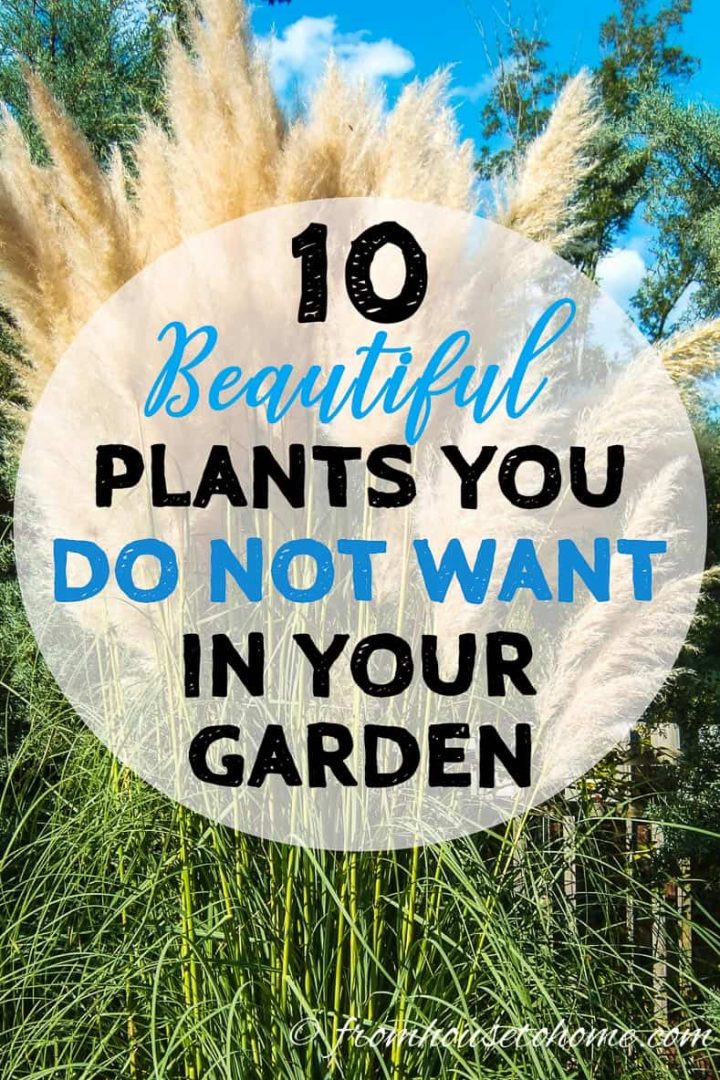

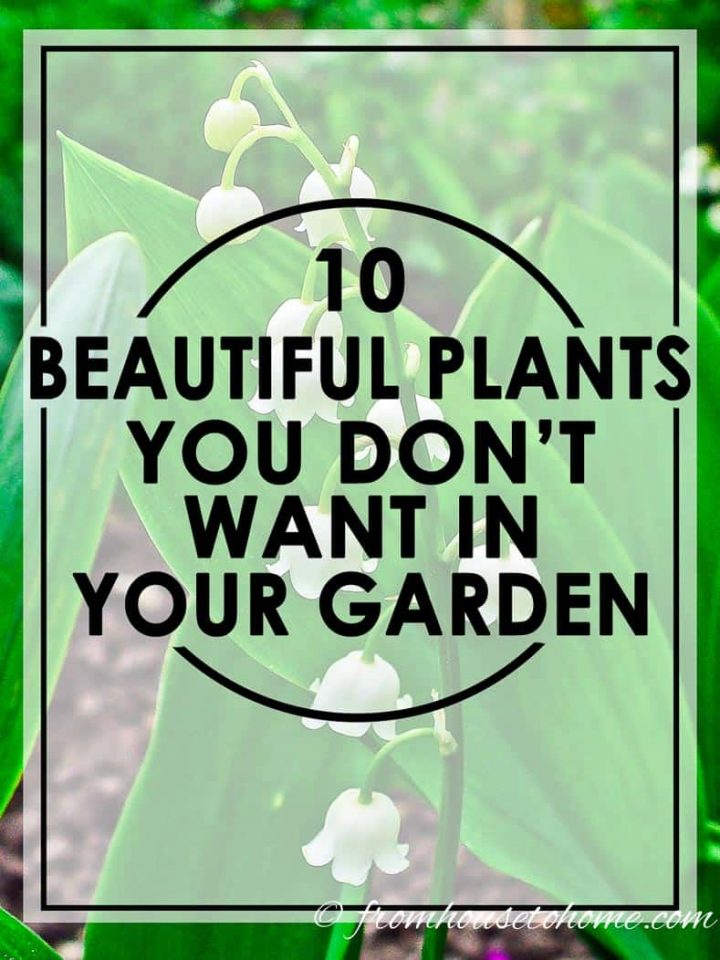
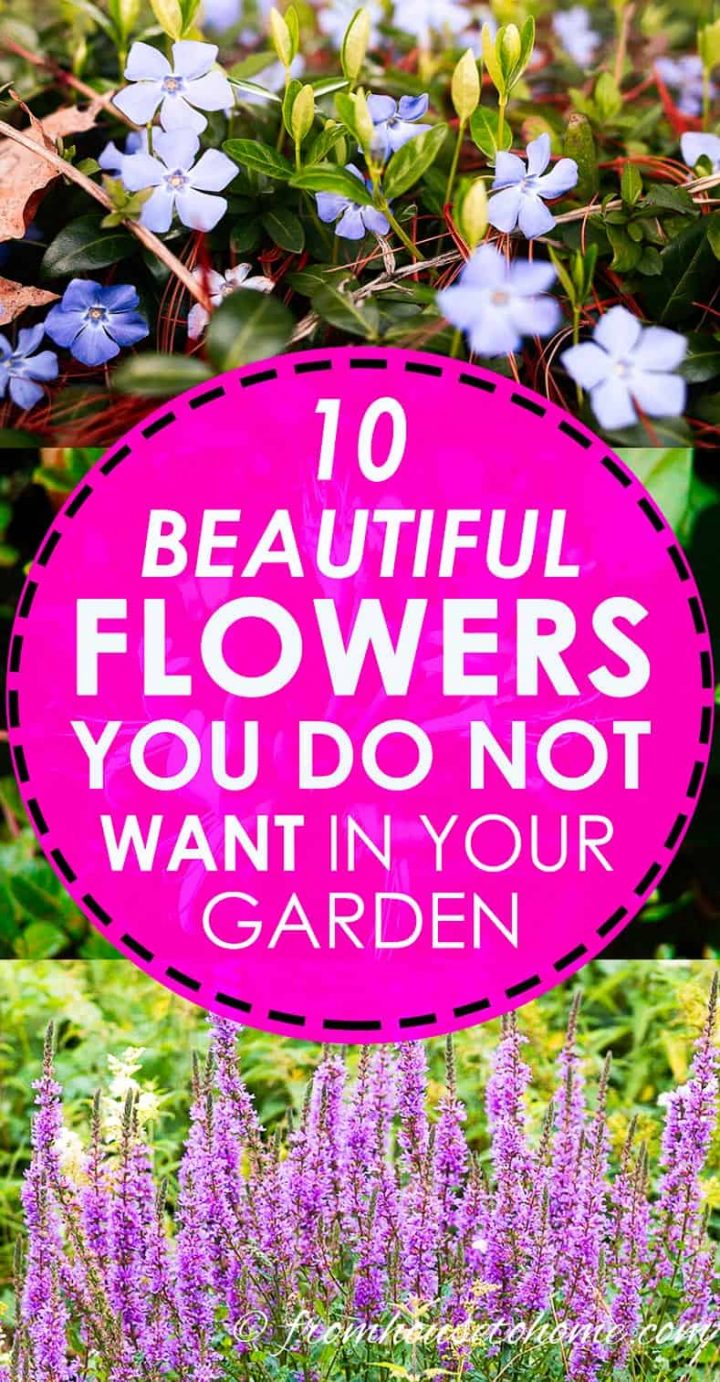

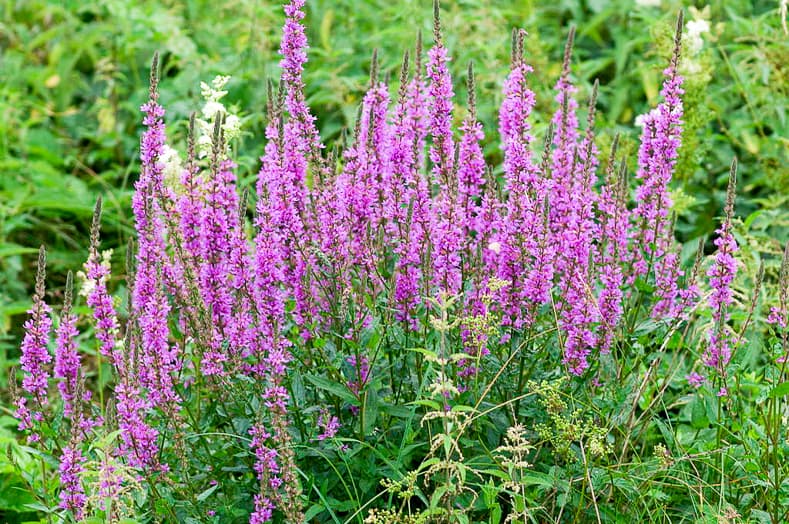

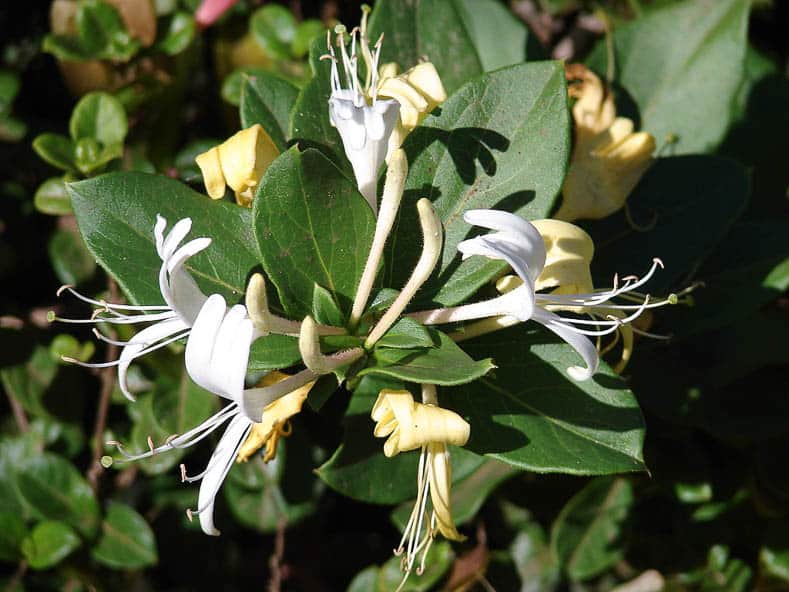
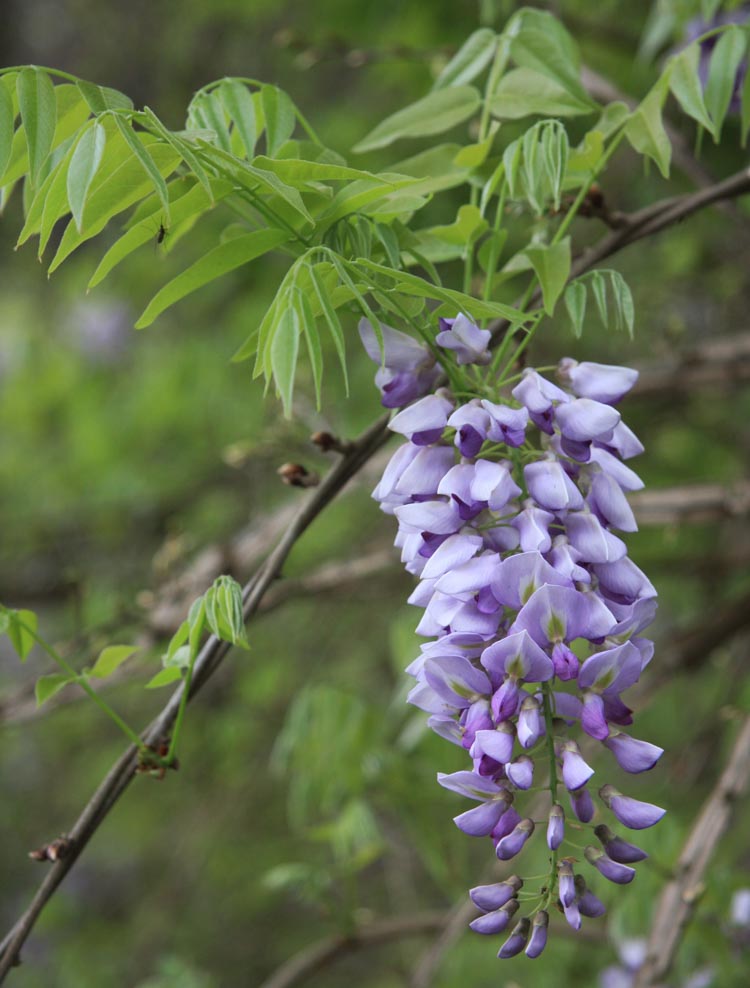
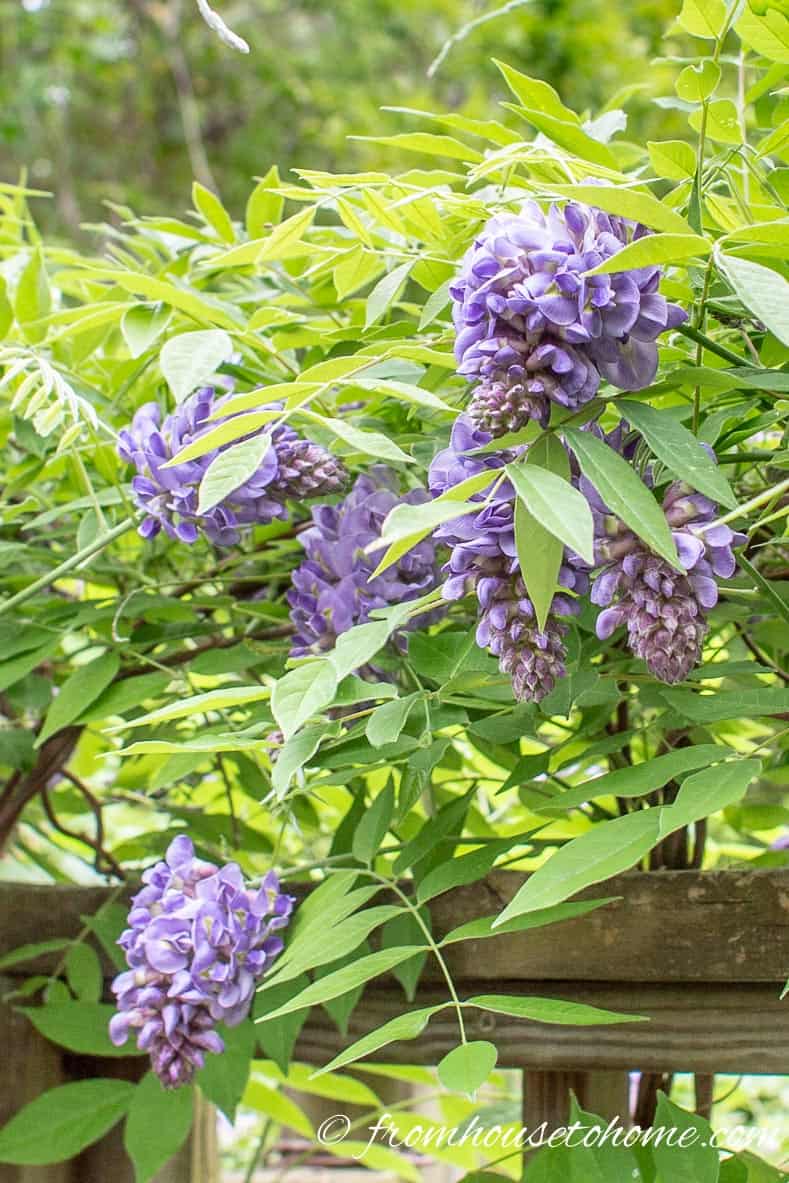
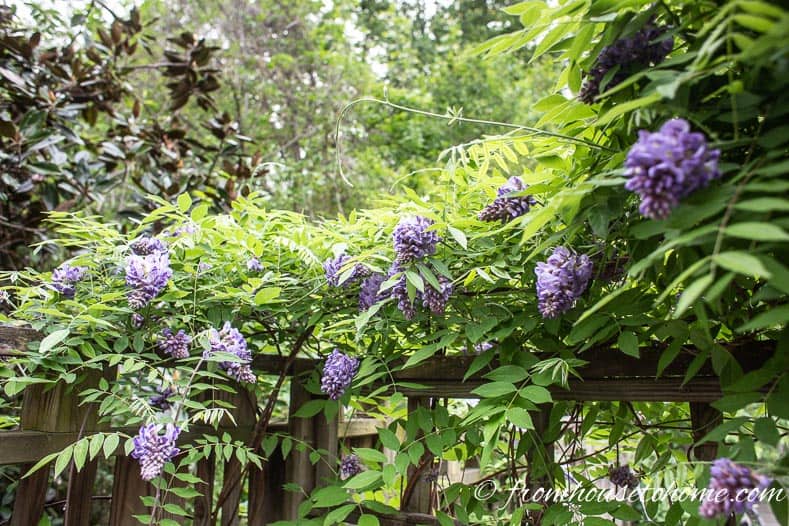
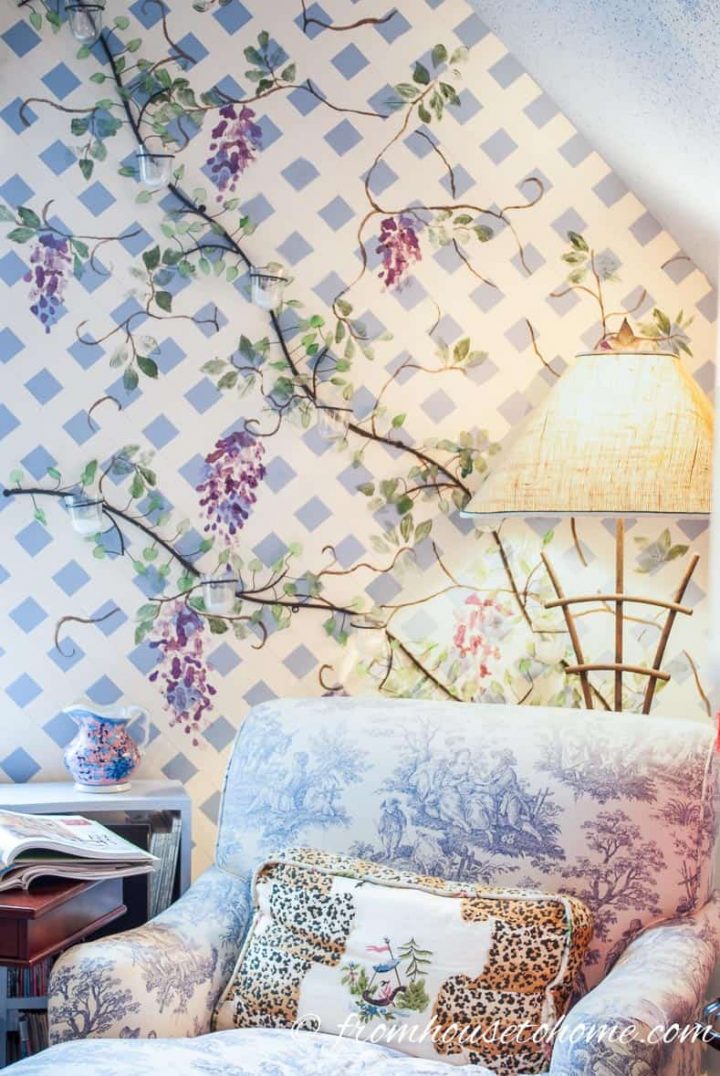
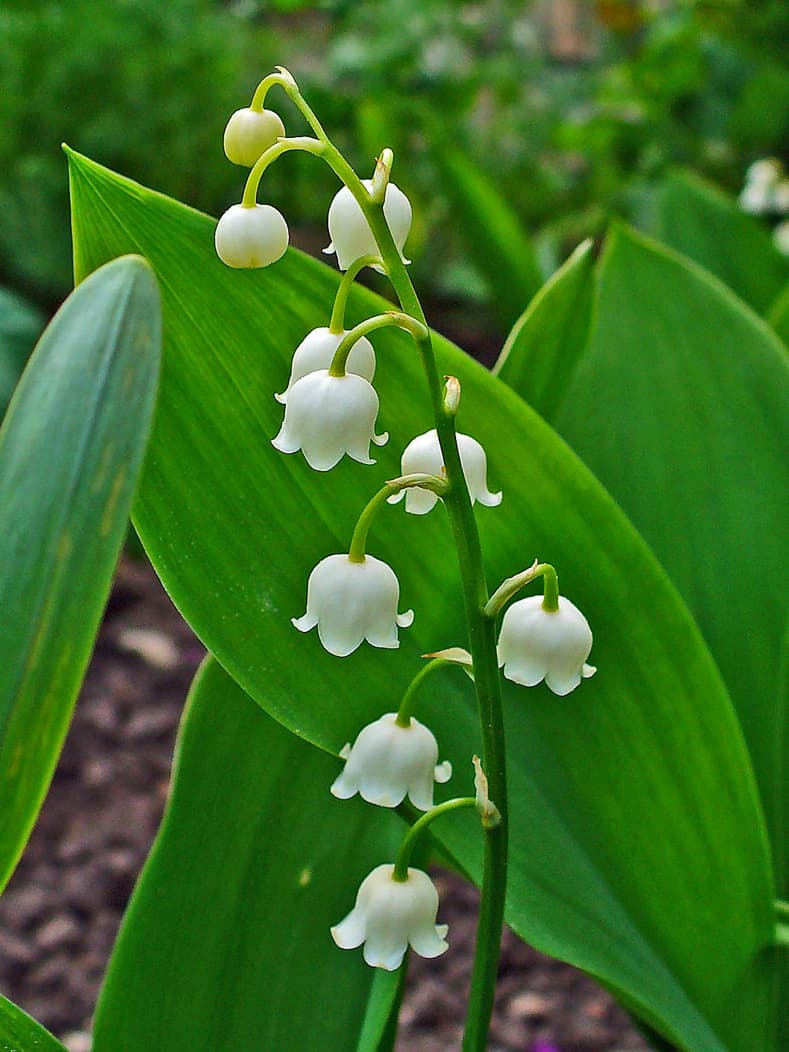
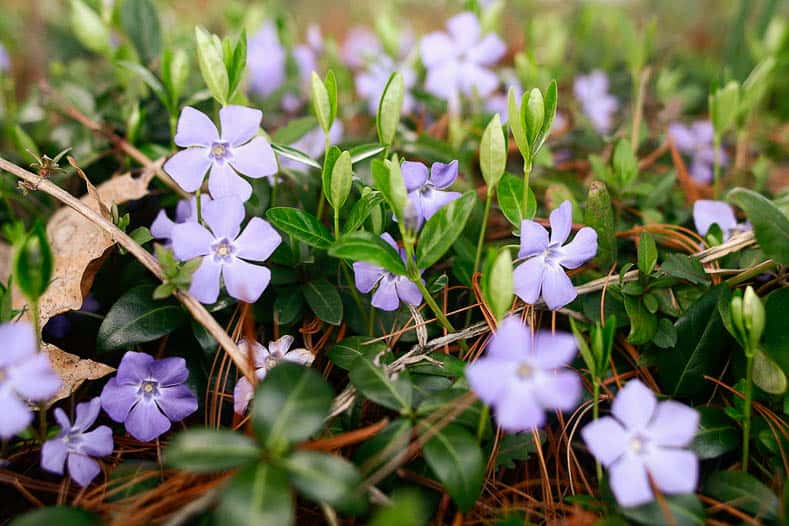
![English Ivy by MurielBendel (Own work) [CC BY-SA 4.0], via Wikimedia Commons](https://www.fromhousetohome.com/garden/wp-content/uploads/sites/12/2017/01/hedera_helix_juvenile_leaves.jpg)


I forgot! Lambs Ear. Planted seeds. It jumped ship and was growing everywhere! I took a clump out to my property and put it next to an old stump. Next spring the moles ate it all. This year, 2 summers later, I found a plant growing in the compacted rock driveway in front of the barn at least 40′ from where it was planted!
Alumnium plant – It took over the back bank of my yard growing into the woods and loves shade. Now it’s growing into the horse corral. I have experience with 6 of the plants you mentioned. The periwinkle seems unstoppable and I pull out buckets, but still it infringes on even bluebells and tulips
Thanks for the addition, Meredith! I haven’t tried Aluminum plant but it sounds like that’s a good thing 🙂
Jerusalem artichokes. Migrates wherever it wants to
Timely Tip: This is a great substitute for Toilet Paper. Many of our grandparents and great-grandparents grew it around outhouses for that purpose. They also used it for bandages.
Bishops Weed. Do not ever plant it into a flower bed. Even a tiny root left in the ground it sprouts again. I have been pulling it for years and still find some. I have bugleweed and I like it but it does spread very fast. I found that overseeing it in lawn with grass seed sometimes suppresses it. Morning glory is horrible. I have pulled and sprayed all the plants for years now and there is no flower but random seeds are still coming up. I don’t know how… And I really hate Rose of Sharon. It has sterile varieties but the traditional ones seed everywhere.
I know what you mean about the morning glory – it seems to come out of nowhere …. for years!
Thank you all for the list of nasty creeping critters~!! I’m making a list and checking it twice when I next go to my garden store for fill-ins. Whew.
You’re welcome! Happy gardening!
Japanese knotweed……..it kills everything in its way.
Creeping Jenny, I’m not sure if it kills plants in its way, but it sure spreads fast
Horsetail…….I pull it, I try to kill it, but no thing is working….help🤬🤬
If you have the time, please email me re handling these 3 plants….thank you.
Spiderwort – I cant get rid of it! It’s underground root system is everywhere!
NO KIDDING! A friend gave me some. It has spread all over my yard and into my neighbors’ yards!
Sweet pea is invasive
Trumpet vine took over most of my yard; others that have become invasive include obedient plant, camomile (reseeds everywhere) ribbon grass, sweet pea vine.
And although not a plant, locust trees sprouted up everywhere in the yard.
I have Trumpet vine, Virginia creeper, vinca, and English ivy.. been trying to get rid of everything but the Virginia creeper For 4 years and it’s still comes back. The creeper I like because I can keep it in check where it is
Thanks for the updates, Holly!
Some goldenrods are terrible. Also Japanese Anemones spread. Some milkweeds spread and are difficult to contain.
Burning bushes (Euonymus alatus). The seedlings come up everywhere and the roots are hard to remove if you don’t get them out when they are small. They are also on the invasive list.
I thought Missouri primrose was such a pretty pink bloom, so I began it with seed and had the dickens to get rid of it. Puts out runners like Lily-of-the-valley, and also Snow-on-the-mountain, another pain in the neck I still have not gotten rid of. It will even come up in the lawn. I also have hardy sweet pea and the roots go clear to China. I suppose they could be gotten rid of with some work, but they do multiply and the roots are awfully long. I’ve only ever found the end in very small plants. And let’s not forget the creeping bellflower which I have dug out maybe three or four times, but it always comes back cause if you don’t get all the little root-lets and nodes, it’s not really gone.
Thanks for the additions to the list, Holly! I haven’t tried growing Missouri primrose, so it’s good to know it can be a problem.
Creeping bellflower came with my house. It was very pretty in the hedge along the driveway – but it jumped the drive and has invaded every sq ft of my garden – and yard, and is now moving across the street and down the block. Oh my. I can spray it with round-up and it comes back.
Wow! If it can survive roundup, it must be one tough plant!
Any variety of Dead Nettle. We planted as ground cover under cedar trees and it took over and spread into the lawn. Five years later, we still find small sprouts, which I dig up and put in hanging baskets. Drapes beautifully and even flowers in the basket.
Thanks for the tip, Gail! At least it’s good for something 🙂
Yarrow…..it almost took over my sun garden and working really hard, I have most of it gone. I like it, so I haven’t pulled up all of it, but it will take over other plants. And I see someone else mentioned lamb’s ear….yep, another one I had to pull out – and yet, it shows up clear across the driveway in another garden!!! 😉 Peppermint will also show up in different gardens…ha Keeps us out of trouble, huh?
Thanks for the additions to the list, Pebble!
Violets. They’ll take over your lawn.
Thanks for the addition to the list!
Wish somebody had given this list to the people who owned our house before us. Im currently battling most of these.
You should add trumpet vine to this list. It’s literally tearing down my fence.
I’ve heard that trumpet vine can be pretty aggressive…thanks for the suggestion, Amanda.
Evening Primrose. So pretty, but plant it in a contained area. It takes over and you’ll never be rid of it.
Thanks for the addition to the list, Betty!
Then there’s Houttuynia cordata variegated! Only common name I’ve heard is heart leaved houttuynia ‘chameleon’. Grows into and over any nearby 2’ shrub, into the lawn, etc. It creeps by big fleshy roots that all but require nuclear waste to get rid of.
Thanks, Suzanne! I haven’t heard of that one before, but now I know to stay away if I see it 🙂
ABSOLUTELY!! THE DEATH OF ME!
Mexican Petunia , extremely invasive, roots go everywhere! Nurseries should be banned from selling it! Pretty purple flowers on 3-4 ft stems. I have been trying to dig out of flower beds for 2 years now!
Thanks for the addition to the list, Erin!
I started a rock garden on the bank in the front yard. The reason – neither my husband nor I are physically able to mow the steep grade. We wanted low maintenance and didn’t want to have to mess with it every year. I’m pretty sure I planted every invasive one on your list. If course now it’s a parttime job to keep it under control. Let me add to the list; Phlox, Rose of Sharon, and Iris. Yes, I love them all, and they are invasive. Thank you so much for sharing!
A rock garden sounds like a good idea for that location, but those invasive plants will make it a lot of work! I hope you get it under control.
Hace dos años talé mi wisteria a unos pocos centímetros del suelo, todas las semanas tengo que cortar los brotes!!!
Otras invasivas para agregar a la lista: Asparagus sprengeri y Asparagus plumosus, Mirabilis jalapa, Commelina erecta y la peor de todas Nothoscordum gracile. Realmente ellas hacen muy difícil la jardinería
Snow on the mountain, chives and most definitely Trumpet vines.
Cut leaf coneflower, aka “outhouse plant”. Tall, late season, daisy-like yellow flowers. After a few years, it spread out of control. It, and creeping bellflower, have pushed out many desirable plants in my cottage-style garden.
Thanks, Deb! I haven’t tried cut leaf coneflower…so I’ll be leaving off my plant list 🙂
Yellow flowered Aluminum plant crazy spreader. I like the purple flowered ones though they stay in check. Working on a wisteria now too, it took over the raspberry bed, which by the way also spread like crazy.
Thanks, Carolyn! You’re right, raspberries also spread pretty fast. I grow mine in raised beds to keep them from going everywhere.
Moneywort is a beautiful ground cover or trailing vine in containers but it can totally overtake a flowerbed and jump to other beds. However, it is easy to pull up or trim. I like having it to add to containers. I’m sad to see that some plants I’ve added to my gardens are going to be giving me lots of work in the future.
Thanks, Linda! I like Moneywort in containers, too…haven’t tried it in the ground, so it’s good to know I probably don’t want to 🙂
Don’t forget gooseneck! I have almost gotten rid of in one bed. It takes work but you can get rid of it just like lilly of the valley and yarrow. The worst is snow on the mountain. Hard to get rid of and if you do like my hubby did (burry in dirt over 2 foot thinking he is gonna kill it (ha)) it still grows and is impossible to get rid of.
Thanks, Terri! I have tried burying the plants, too…and it didn’t work for me either 🙂
Try boiling water. Pour a big teakettle directly on roots. It might work. I can tell you sure enough that it works on any ant hills, black ants and Red ants. Pour enough to kill the queen and I only hadda do it one time. At dusk when they all come home from work. By the way I learned a long time ago to only plant mint in a container. It’ll take over every thing in your flower beds including small children and Volkswagens.
Thanks for the suggestion, Cathy! And I agree that mint is best grown as a container plant 🙂
Thanks for the info! Mexican Primrose and Bee Balm are my biggest challenges! They can both be weed pretty easily but its a constant job to keep them contained!
Thanks, Kate! I have Bee Balm, too…and I agree on having to pull it consistently to keep it in check 🙂
Japanese anemone, although you can pull up the spreaders, they WILL come back. Also, I have a variety of bellflower (campanula) that is so invasive it will can only be killed with Roundup (found that info on another site). Not my favorite way to get rid of something, but its too far gone to dig up.